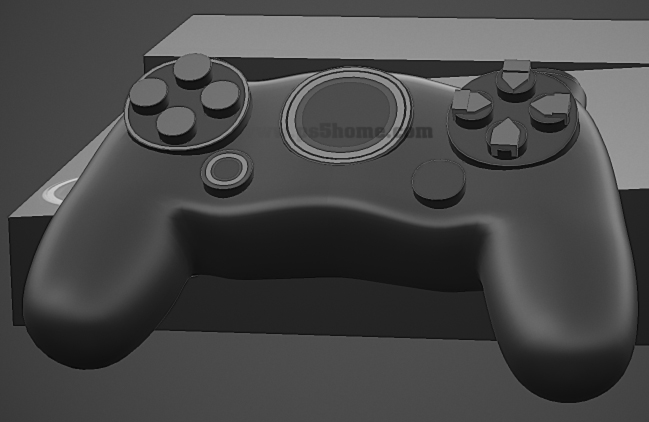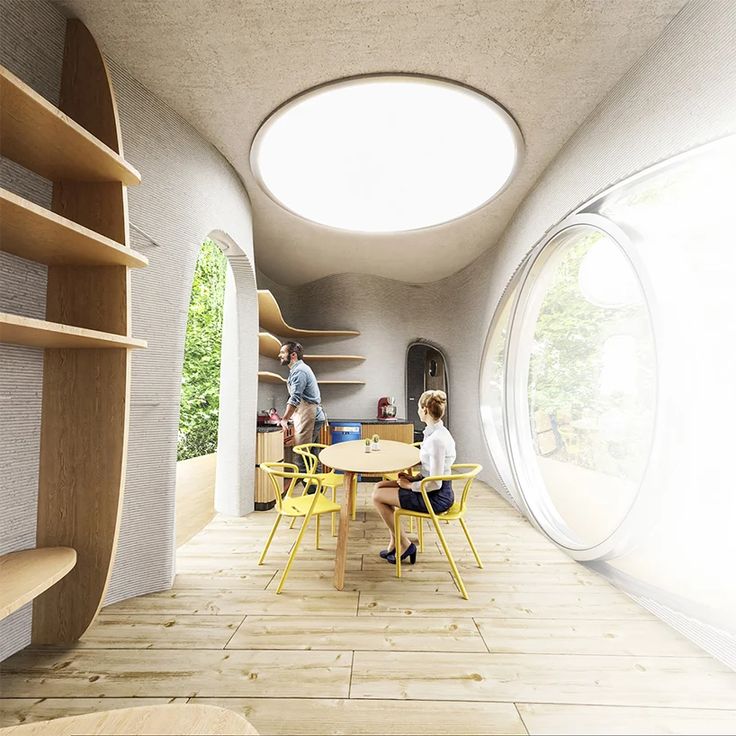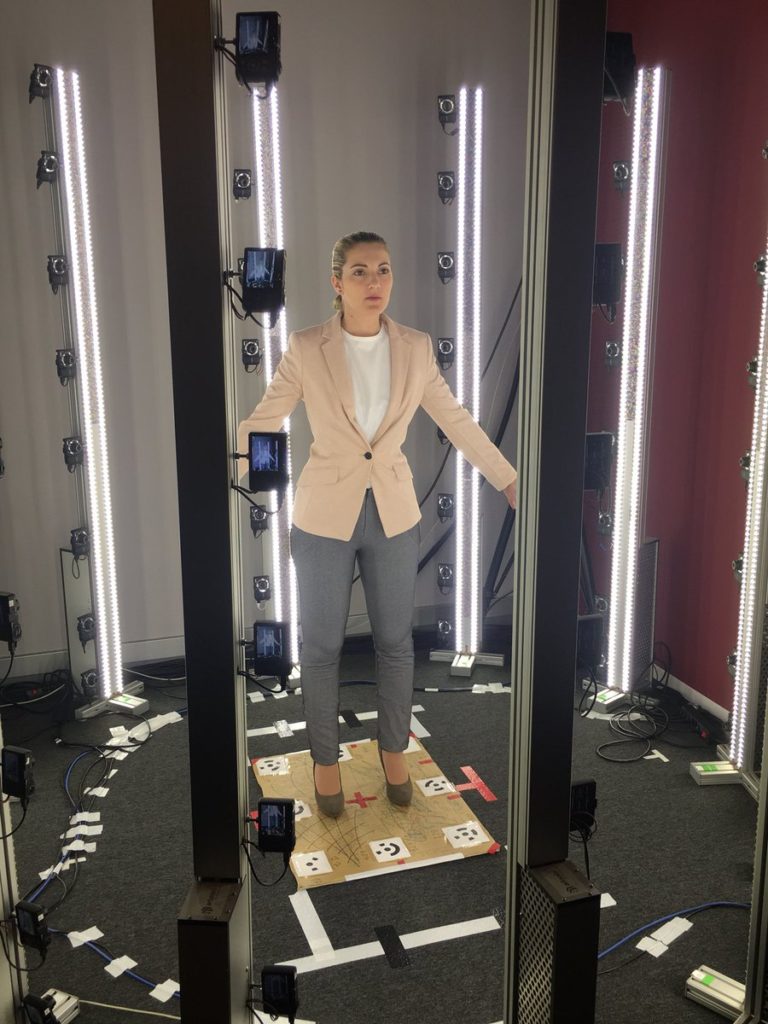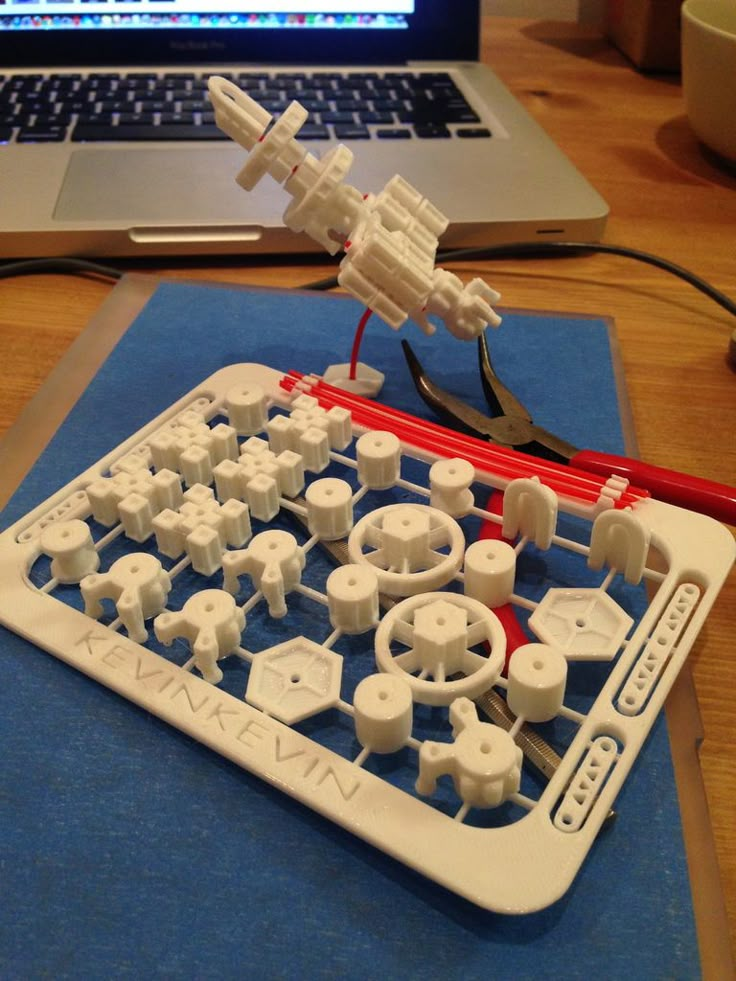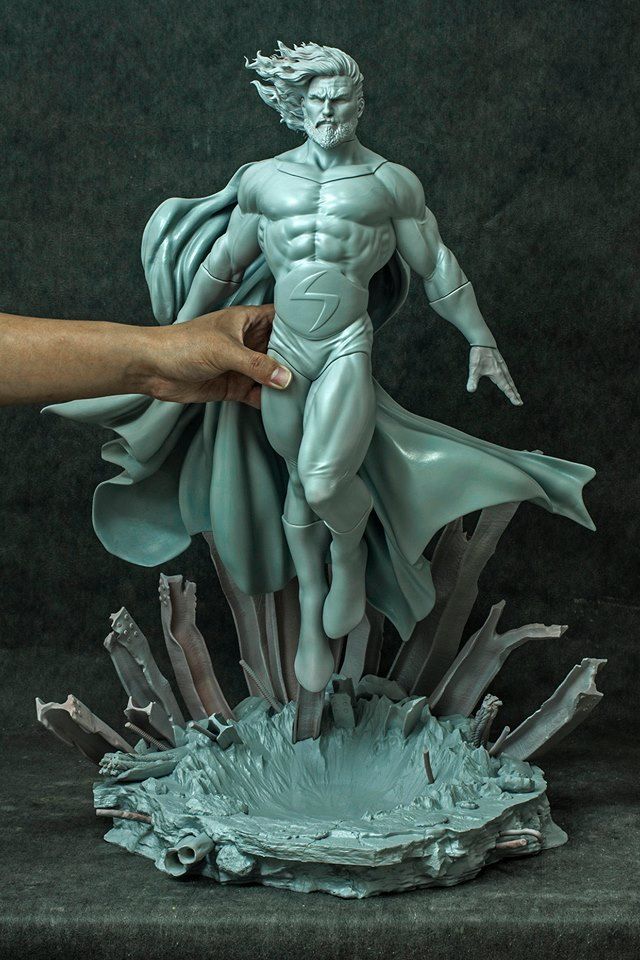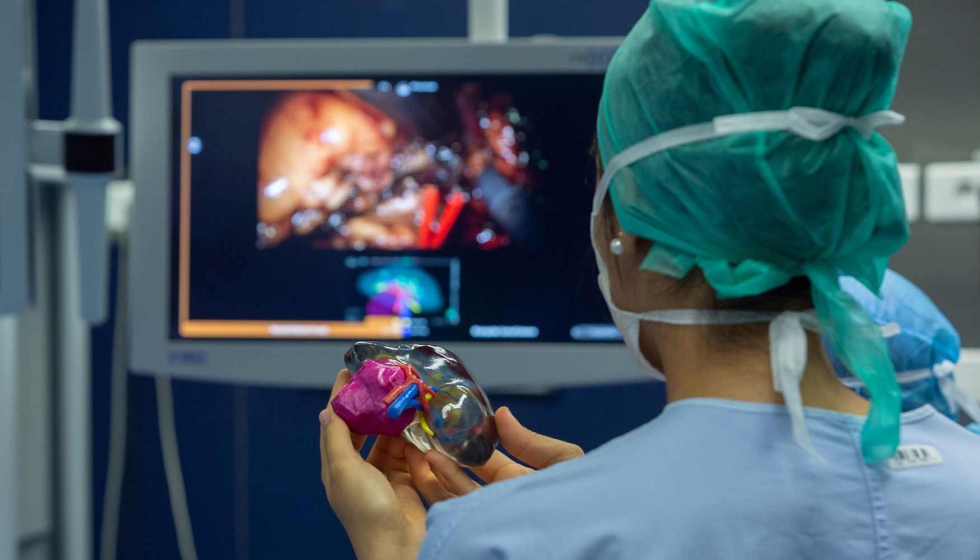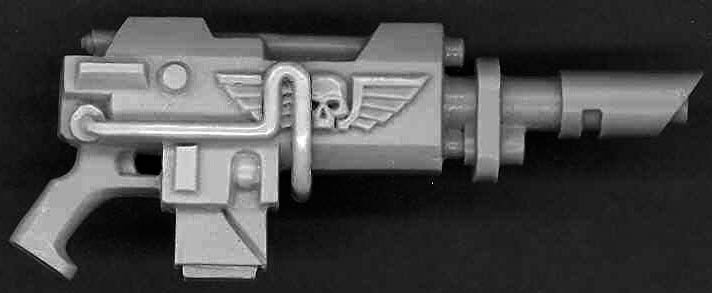3D printer cost to print
How much does 3D printing cost?
As a 3d printing company, we always get asked: "how much does it cost to 3d print?".
Our answer has always been "it depends" as there are factors that contribute to the cost of 3d printing. You're looking at anywhere between $3 to $1000(or even more) for the cost to 3d print based on these factors.
So today, we're breaking down each factor for you. If you're 3D printing at home, then those factors are your material, electricity and 3D printer cost. But if you're looking for a 3d printing service or looking into starting a 3D printing business, this guide should help you understand how pricing works when it comes to 3d printing.
Factors that affect the price of 3D printing
Cost of buying and running a 3D printer
If you're starting a 3D printing business or looking to make money with 3D printing, you might want to consider the price of a 3D printer in calculating the cost to 3D print something. 3D printers can cost anywhere between $200 to $150,000 depending on the technology being used.
Let's say you purchased a $1500 3D Printer that you plan to use 8 hrs / day for 2 years. We're going to ignore repair cost, electricity, etc. for the sake of simplicity.
8 x 365 x 2 = 5840 total hours
$1500 / 5840 hrs = ~ $0.21/hr
So if your 3D model would take about 4 hours to 3D print, then you need to charge $0.84 on top of your price to account for your machine upkeep.
In a way, the time it takes to 3D print also adds to the cost of 3D printing.
3D Model
3D model of a dinosaur trophy"Send us the 3D model" is the second thing we tell our clients after telling them "it depends". Without the 3D model, it's tough to come up with an accurate quote for a 3D print even for seasoned veterans.
The 3D model gives us essential information that can help us quote a 3d print.
Model volume
With the 3d model on hand, we can calculate the total volume of the model, including the generated supports.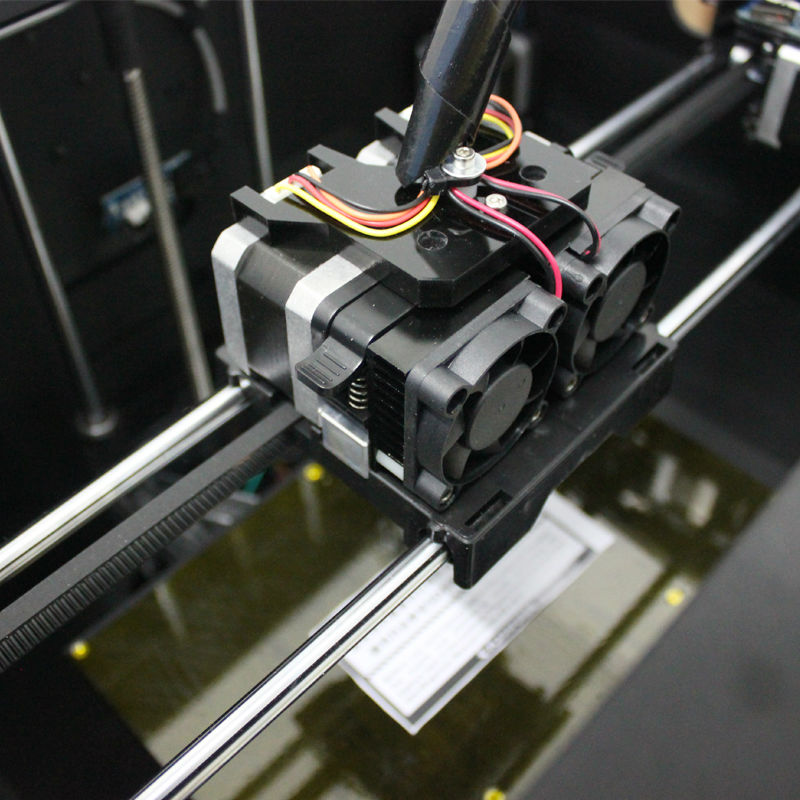 The total volume lets us know how much material is needed to 3d print your file.
The total volume lets us know how much material is needed to 3d print your file.
In short, the larger the volume, the higher the cost. There are ways to reduce the cost of 3D printing, and one of them is to hollow your model.
A 3ft model can have less volume than a 1ft model if the 1ft model is solid on the inside, while the 3ft model is hollow.
That is why coming up with an estimate price of 3d printing without the 3d model is not easy.
Complexity
Not all 3d models are created equal. Some are 3d print-ready, while some are just plain crazy. 3d printing takes preparation and planning. For some 3d printing services, everything is automated, which can make transactions faster. For simple products, this can be the right solution.
But what about complex parts and architectural models? We found that even with the most sophisticated algorithm, you still need some human guidance when it comes to 3d printing these type of projects.
A quick story, a client sent us a 3d model of an actual stadium.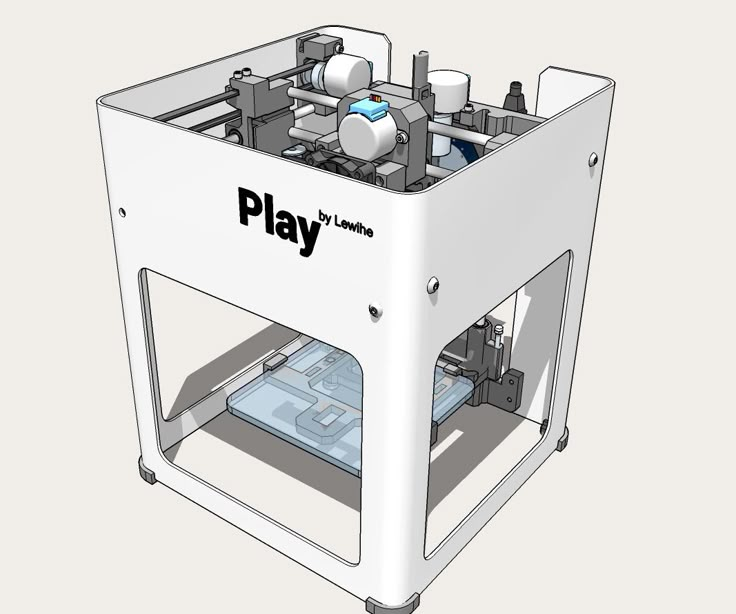 They wanted a 3d printed version of this. As we inspected the file, we saw that the model had multiple problems. There were loose joints, the walls were too thin, and there were 3d models inside the stadium itself.
They wanted a 3d printed version of this. As we inspected the file, we saw that the model had multiple problems. There were loose joints, the walls were too thin, and there were 3d models inside the stadium itself.
If we just 3d printed it right away, it would have cost us thousands of dollars on wasted material!
Take this into consideration. Are you willing to risk having your 3d model printed as is? Or do you want to make sure that the final print exceeds your expectations?
Type of material
The materials that you choose matters when it comes to the cost of 3d printing. There are tons to choose from so we are going to focus on the popular ones, thermoplastics and resin.
Thermoplastics: Filaments and Powder
Cost: $
Even if you are new to 3d printing, you have probably heard of "ABS" or "PLA". That's because these two are the most widely used 3d printing material out there. Hobbyists love these thermoplastics as they are cheap. These filaments can cost between $20 to $70 per kg.[1]
These filaments can cost between $20 to $70 per kg.[1]
Although they are cheap, getting a high-quality 3d print out of them is not easy. It will take hours of post-processing time to get smooth finishing from these prints. (More on that later.) In addition to that, 3d printing complex 3d models are nearly impossible using this type of material.
Thermosets: Resin
Cost: $$$
Resin is, in our opinion, the best 3d printing material out there. It's versatile for almost any complex project, and it would give you the best quality 3d print. But at the same time, resin material can get quite costly. Standard resin, on average, cost $50 per litre, and some resin materials can go up to $300 per litre. Luckily, 3d printing companies usually have access to discounted prices for this type of material.
Want to find out how much your 3D model will cost?
Use our instant quoting system to calculate how much it will cost to 3D print something.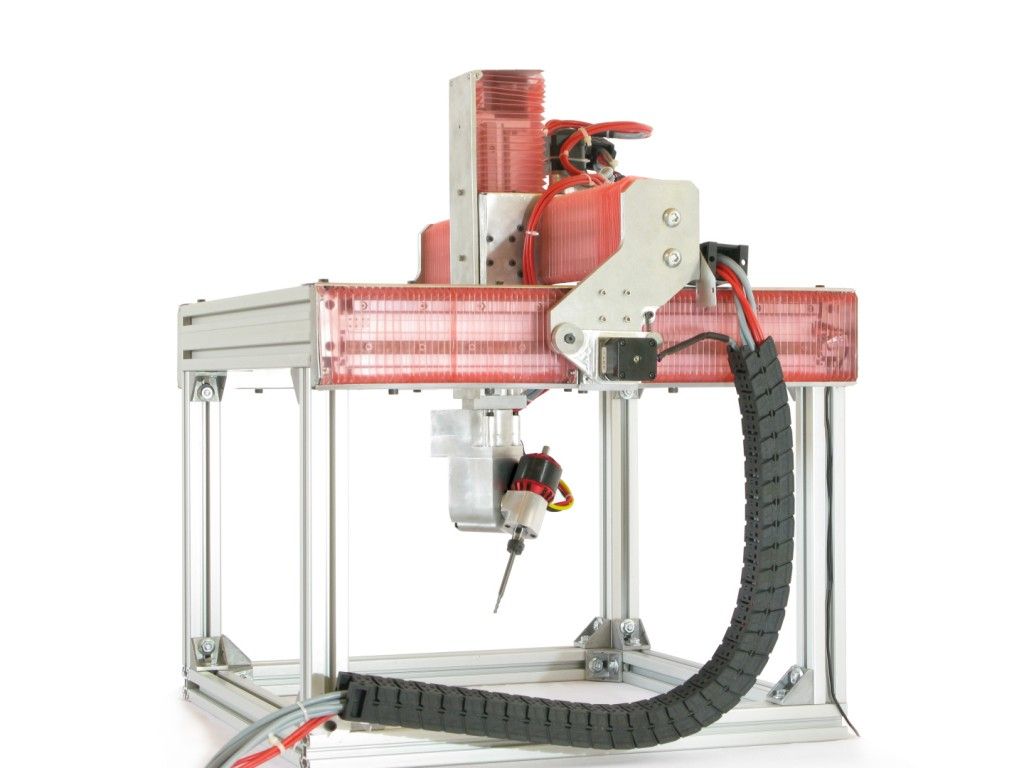
GET 3D PRINTING COST
No signup required.
Post-processing
Most don't realize that 3d printing is not an instant process. Drop your file, print, and it's ready. (We hope it was).
After 3d printing, the resulting print needs to be cured, cleaned and polished before you can consider them useable. That is if the 3d printing service company cares about the quality of their product.
Polishing
Imagine polishing the one on the left to make it smooth? Photo courtesy of Formlabs.For filaments, don't even waste your time. As someone who spent hours removing supports, we don't want to you put you through that hell. If you value your time, the amount of time you will spend sanding these prints would cost a lot. And even then, the quality wouldn't be on par compared to resin.
For resin, it's simpler. Once the pieces are UV cured, we can polish it by hand or using a sandblaster.
Again, the 3d model matters as it could affect post-processing. Some models are so complex that the generated supports are very hard to clean. It would take some expertise and a lot of patience for someone to clean these prints.
Some models are so complex that the generated supports are very hard to clean. It would take some expertise and a lot of patience for someone to clean these prints.
Finishing
At PrintAWorld, the projects that we work on usually require more than just 3d printing. Our clients would ask for their 3d print to have a gold finishing, chrome or even an exact Pantone color. With current 3d printing technology, this is impossible to accomplish. So we offer metal plating and painting on top of our 3d printing services.
Profit margin
For 3D printing companies to stay in business, they need to add a profit margins on top of the 3D printing cost. Profit margins for a 3D printing business can be somewhere between 50% - 90% of material cost. We're using material cost as a basis for the sake of simplicity. But profit margins are actually much lower once you start including labor and overhead costs.
There is also a base price (or a minimum fee) that gets added if if the cost of 3D printing is less than a certain amount. It wouldn't make sense for a company to 3D print something for you for a print that costs $3. Even in a highly automated 3D printing service, there's still some labor involved. Either you add more quantity or pay the base price which is around $30-$90.
It wouldn't make sense for a company to 3D print something for you for a print that costs $3. Even in a highly automated 3D printing service, there's still some labor involved. Either you add more quantity or pay the base price which is around $30-$90.
3D printing service price comparison
Now that we know what factors affect the price of 3D printing, let's see how much it would cost to 3D print this popular WallStreeBets mascot by ChaosCoreTech.
For this test we will be using SLA 3D printing.
We modified the file so we can stress test the on-demand 3D printing services that offer SLA printing.
Scaled it up to 152mm or ~6" high
We hollowed the 3D model. Meaning, the insides are empty.
This makes it use less material, making it cheaper.
Speed up the 3D printing time for SLA, which should lower the cost.
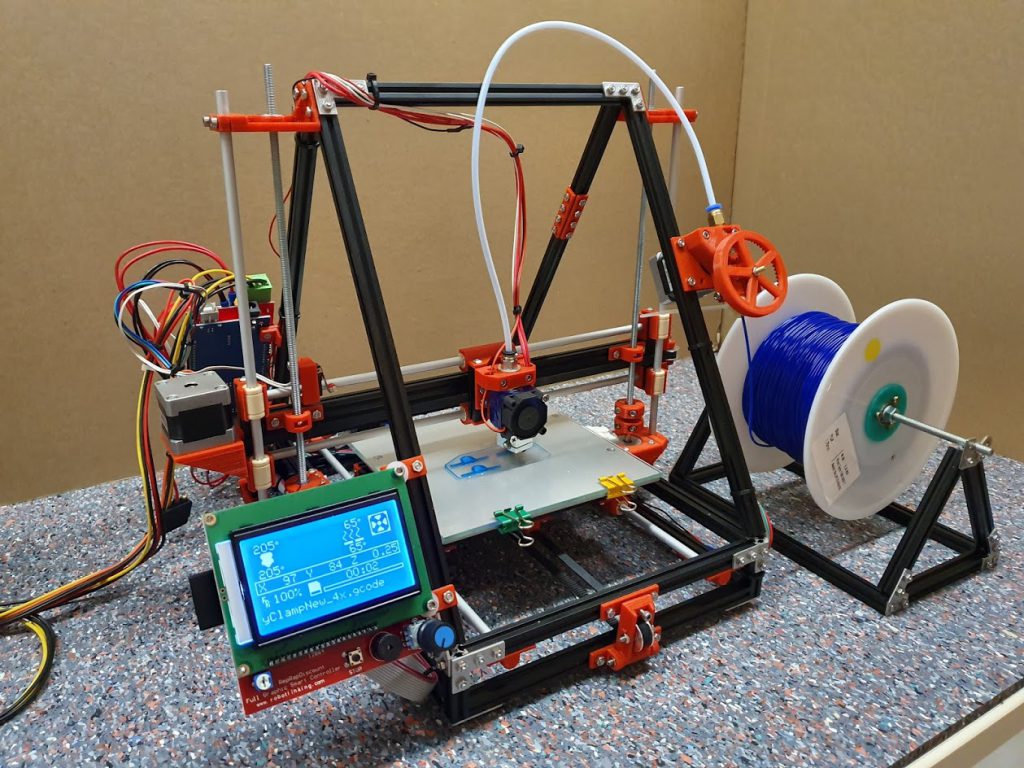
3DHubs
Price: $537
3DHubs won't even allow you to print this in resin as it's bigger than what their manufacturers can print.
i.materialise
Price: $211.17
Cheaper than 3DHubs but they won't clean the supports for you at this price. If you need it cleaned, you need to pay extra.
Shapeways
Price: $2061.56
We're not sure why it's this expensive. They might have miscalculated the model volume which made it seem that this piece would require half a liter of resin to print. But, either way, Shapeways is the most expensive one out of this group.
Most Affordable
PrintAWorld
Price: $136.32
Disclaimer. This is our 3D printing company. For SLA 3D printing, we are definitely the cheapest compared to the others in this group. Removing the supports and polishing is even included in the service.
Try it out
Why are 3D printing services expensive?
3D printing services are expensive because we have to account for factors mentioned beforehand such as labor, post processing and overhead costs.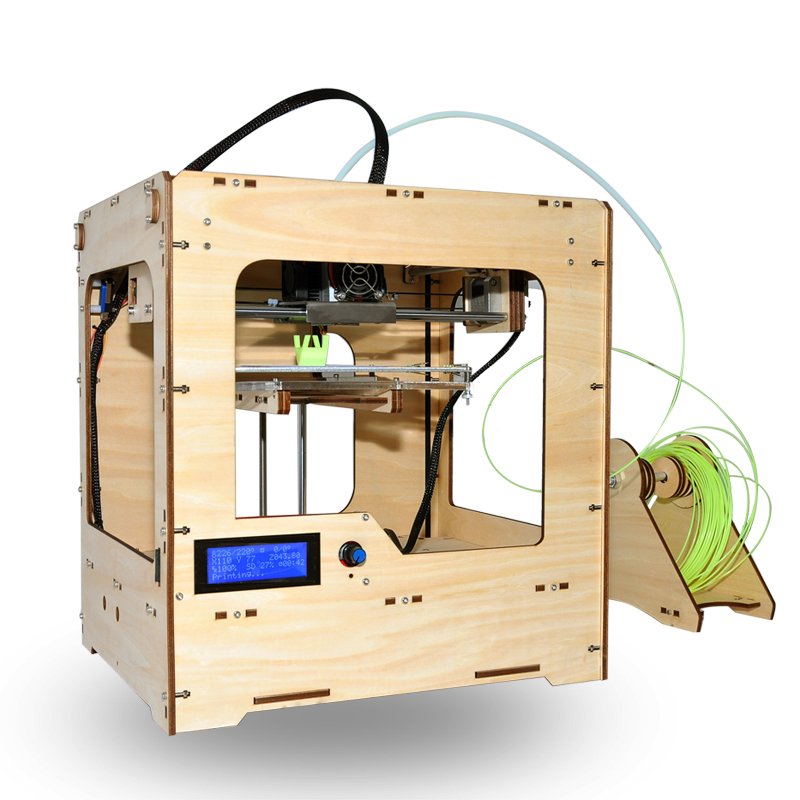 We also have to account the industrial 3D printers that they use, which cost at least $100,000 and upwards. Plus, they have to add profit margin on top of that cost.
We also have to account the industrial 3D printers that they use, which cost at least $100,000 and upwards. Plus, they have to add profit margin on top of that cost.
This begs the question, is it better to buy a 3D printer instead?
Should you buy a 3D printer or hire a 3D printing service?
3D printing services can sometimes cost more than an entry level 3D printer. So you might be wondering if it's better to buy a 3D printer instead.
Here's our thoughts on that:
If cost is a problem for you and you're only 3D printing for fun, then buying a 3D printer might be the better investment in the long run.
If your time is more valuable for you, then hiring a 3D printing service would be the better option. You'll have access to large scale 3D printers and capabilities that is impossible to achieve with DIY 3D printing.
Best Budget 3D Printer
Anycubic Photon Mono
The Photon Mono is the best LCD 3D printer that we've gotten our hands on.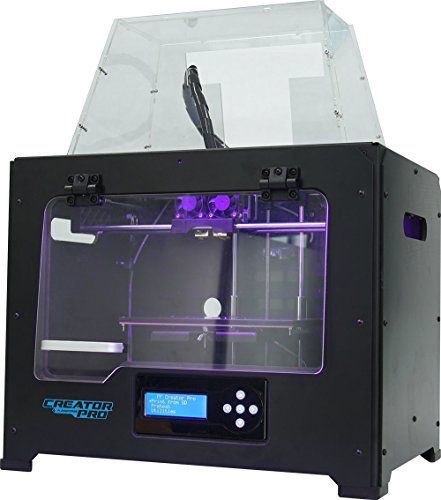 We own 8 of these machines and use it as part of our manufacturing process. It's cheap but the print quality is almost the same as the ones that we get from our Formlabs 3. If you're looking to buy your first 3D printer, we recommend going for a resin 3D printer like this one instead of buying an FDM printer.
We own 8 of these machines and use it as part of our manufacturing process. It's cheap but the print quality is almost the same as the ones that we get from our Formlabs 3. If you're looking to buy your first 3D printer, we recommend going for a resin 3D printer like this one instead of buying an FDM printer.
$229.00 from Anycubic
Commisions earned
In Summary
Multiple factors affect the price of a 3d printing service. If you add in all these variables, you're looking at anywhere between $30 to $15,000 for the cost of 3d printing. The price can even be lower or higher, depending on the scale of your project.
How Much Does 3D Printing Cost? Cost to 3D Print Objects – 3D Printerly
When it comes to 3D printing, many people wonder how much it costs to 3D print an object, whether that is a small item like a miniature figure, or a larger item like a helmet or mask that they can wear.
There are quite a few costs associated with it which can get a little confusing, so I decided to write an article about how much it costs to 3D print an object in filament or resin.
If you already have a 3D printer, your cost is just the filament and electricity for the most part. To 3D print an object that uses 100 grams of filament, it will cost around $2.50 using a price of $25 per KG of filament. The same 3D print in resin will cost around $4.50 using a price of $45 per KG of resin.
Costs don’t fluctuate too much due to a fairly constant price of materials, though you’ll want to do basic maintenance and maybe some post-processing afterwards.
Let’s go through the basic costs of 3D printing so you have a better understanding of how much it costs to 3D print an object. Keep reading for a more detailed answer.
How Much Does A 3D Printer Cost?
In order to 3D print an object, we’ll need to look at the biggest initial cost which is the 3D printer. Luckily for normal consumers, 3D printers have drastically decreased in price as time has gone on.
The materials that are required for creating 3D printers are increasing in supply, as well as the number of manufacturers that are competing in the space. For a standard FDM filament 3D printer like the Ender 3 (Amazon), you can get this for around $200.
For a standard FDM filament 3D printer like the Ender 3 (Amazon), you can get this for around $200.
The other type of 3D printer which is growing in popularity is the SLA resin 3D printer. A budget SLA resin 3D printer like the Elegoo Mars 2 Mono is currently around $230, which is a lot cheaper than what they used to be.
Previously, you would have been looking at least $1,000 for a basic version of these 3D printers, so it’s something a lot more manageable for us average users.
These are great for entry-level hobbyists, though if you want more practical features, you’ll want to spend more.
The Artillery Sidewinder X1 V4 (Amazon) is around $450 and is a great option for a filament 3D printer.
It comes 95% pre-assembled, so a beginner can put it together very easily, and comes with a much larger build volume than the Ender 3 at 300 x 300 x 400mm.
It has a touch screen operation display, as well as a direct drive extruder which makes printing some materials a lot easier.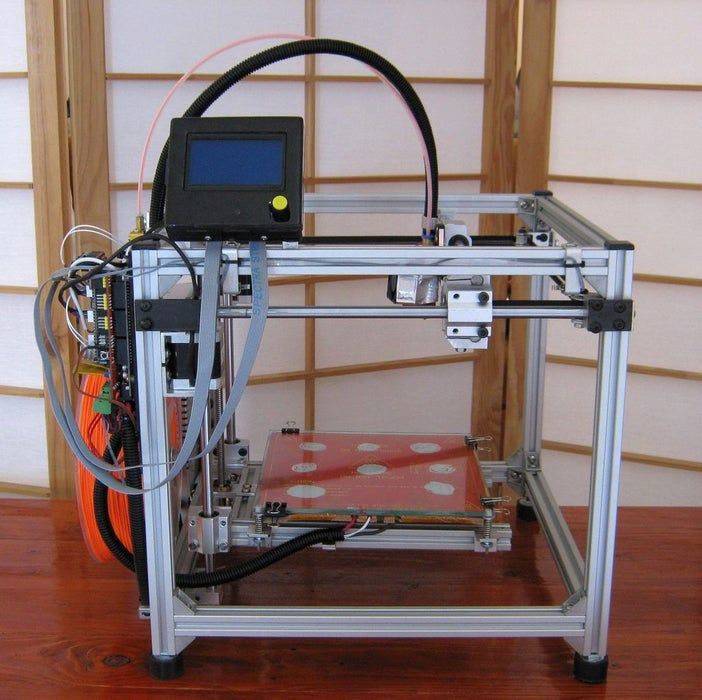
The design is a lot cleaner, compact, and professional looking, and since it’s a long-term machine, makes sense to invest a good amount into it.
The Anycubic Photon Mono X (Amazon) is around $700 and is a great option for a resin 3D printer. It also comes mostly pre-assembled, just requiring you to place a few parts in the right places, and put in the power supply. The bed leveling process is very quick.
The main upside of the Photon Mono X over the Elegoo Mars 2 Mono is the build volume of 192 x 120 x 245 against 129 x 80 x 150mm. This is large for a resin 3D printer and with the 8.9” 4K resolution screen, it significantly increases printing speed (up to 3x).
Another key benefit is how the LCD screen in the base of the printer is designed to last about 4 times longer than the outdated RGB screens for 2,000 hours of printing. The screen is what produces the light to harden the liquid resin into plastic.
Now that we have the 3D printers out of the way, let’s look directly at the materials so we can accurately figure out how much it costs to 3D print an object.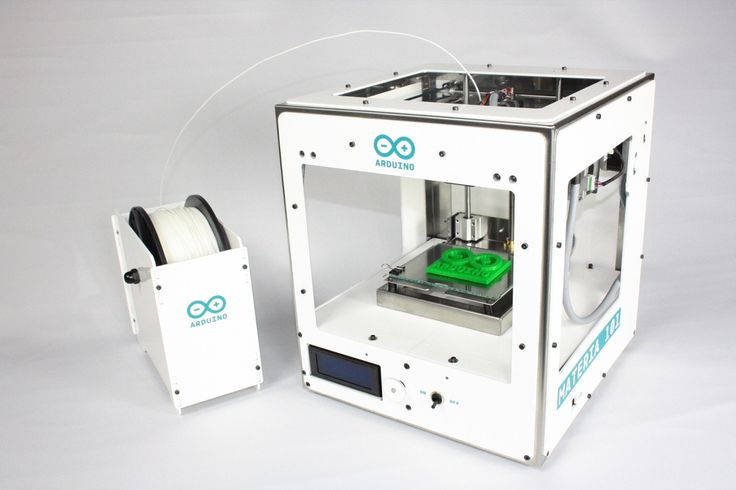
How Much Do 3D Printing Materials Cost?
There are two main types of materials when it comes to 3D printing – filament and resin. Filament starts at around $20 per KG, while resin starts at around $35 per KG.
Filament is packaged up as a round spool of plastic which usually sits on top of the 3D printer with a spool holder for FDM printers.
Resin comes in a dark bottle with UV protection and is full of the photopolymer liquid resin that you pour into the resin vat of your SLA resin 3D printer. It has to be stored this way because the liquid hardens to UV light.
How Much Does 3D Printing Filament Cost?
A standard spool of filament will cost you anywhere from $20-$30 per KG, but there are many types of filaments that you can get.
PLA – Hatchbox PLA on Amazon goes for around $25 per KG.
ABS – Hatchbox ABS on Amazon goes for around $22 per KG.
PETG – Overture PETG on Amazon costs around $21 for 1KG.
TPU – Ninjaflex NinjaTex TPU costs around $33 for just 500g, or you can get Hatchbox TPU for around $31 for 1KG.
ASA – Overture ASA filament costs around $32 per KG on Amazon. Polymaker Polylite ASA is another popular brand of filament that costs around the same price.
Nylon – Overture Nylon filament costs around $35 per KG on Amazon.
How Much Does 3D Printing Resin Cost?
The two most popular brands of resin are the Elegoo Rapid Resin and the Anycubic UV-Curing Resin which cost around $35 per KG. These are great quality resins that can definitely produce high quality models.
They cure/harden fairly quickly, have fairly good levels of toughness and rigidity, as well as having excellent fluidity so it can be easily cured into complex and detailed shapes.
You can get more premium resins that offer characteristics such as higher durability and strength, more flexibility, mechanical-grade tough resins and even professional-grade dentistry resin.
Elegoo Water Washable Resin costs around $40-$45 per KG and it allows you to wash your resin models with just water rather than isopropyl alcohol.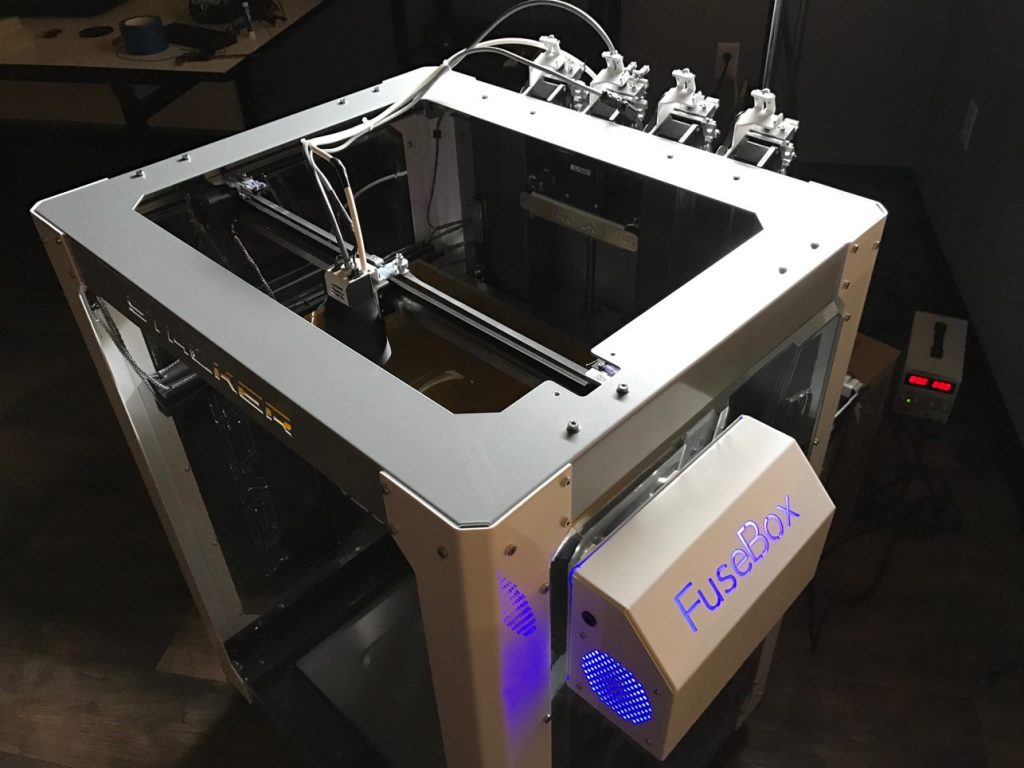
Siraya Tech Tenacious Flexible & Impact-Resistant Resin costs around $65 per KG and provides users with a premium resin that works very well.
The great thing about this resin is how it can actually be mixed with other resins to increase their strength, flexibility, and even detail. One user even tested a piece printed with this resin by running over it with his truck without the 3D print breaking.
Formlabs Model Resin costs around $150 per KG and is a specialized resin that is high-precision and high accuracy. It’s specifically used in the dental field but can still be used to create high detailed models.
This is only compatible with Formlabs 3D printers such as the Form 3, Form 3L and Form 3BL.
Just to complete the knowledge with 3D printing materials, I’ll briefly mention metal powers for metal 3D printers.
A popular metal power like Aluminum Alsi7mg can cost between $24-$26 per KG, though the 3D printer itself can set you back $50,000 – $1,000,000, so this isn’t too relevant for individuals like us – rather industrial companies.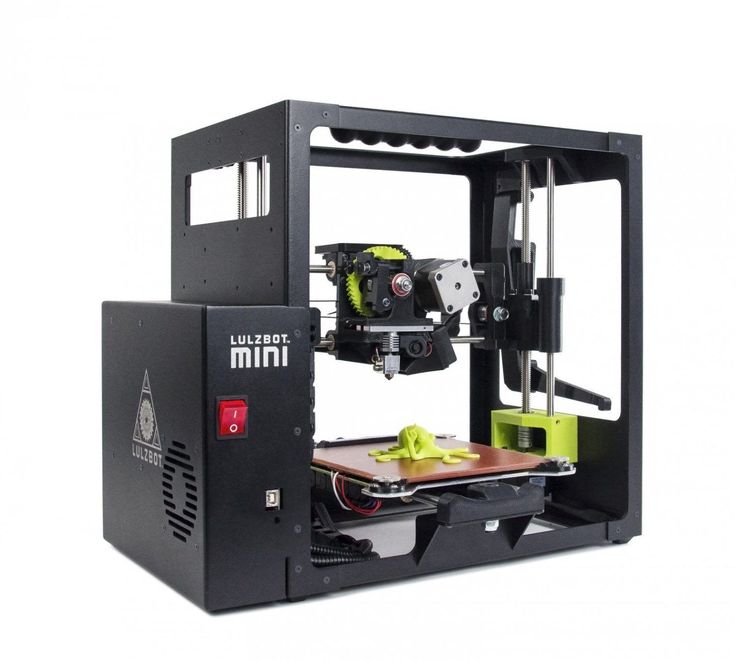
How Much Does 3D Printing Cost? Other Materials
When it comes to 3D printing, after you have your 3D printer and filament, there are other costs associated that is worth paying for.
You have the option to be as cost-effective as possible, but if you want the best 3D printing experience, I’d recommend getting some extra items.
Elmer’s Disappearing Glue
Elmer’s disappearing glue is one of the best glues to use when it comes to 3D printing purposes. It is called disappearing glue because it is usually purple when you apply it but turns clear once it dries.
This glue has been manufactured using an acid-free formula which makes its adhesive properties spectacular. You can glue different parts of your model without worrying about them coming off.
It is also non-toxic, which makes it suitable for use when 3D printing at home, school or in a workplace.
One user found it particularly useful because it helped his prints stick to the hot bed until the print job was completed.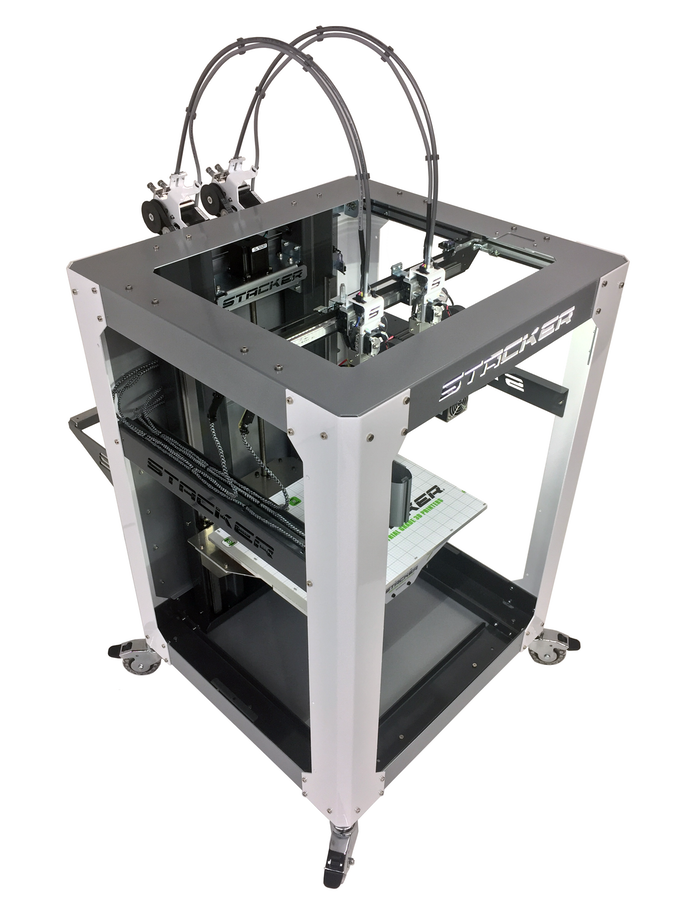
Check out Elmer’s Disappearing Glue on Amazon.
Sandpaper Assortment
Austor sandpaper is made from silicon carbide which provides a wet or dry sanding experience. One package of this Sandpaper assortment comes with 102 pieces of assorted abrasive sheets in different grits ranging from 60 to 3,000.
This sandpaper has been specially manufactured to be efficient with automotive sanding, and wood furnishing, but works very well with 3D prints. It is one of the toughest sandpaper out there offering high quality natural abrasion.
This makes it suitable for sanding and polishing 3D models after printing. One user said that he used it when working on his resin print and it helped him achieve an almost glass finish.
Check out the Austor Sandpaper Assortment on Amazon.
Primer/Spray Paint
Rust-Oleum primer is a water-based primer designed for exterior use in a wide range of products like furniture, laminate, PVC, railings, galvanized steel and thermoplastics.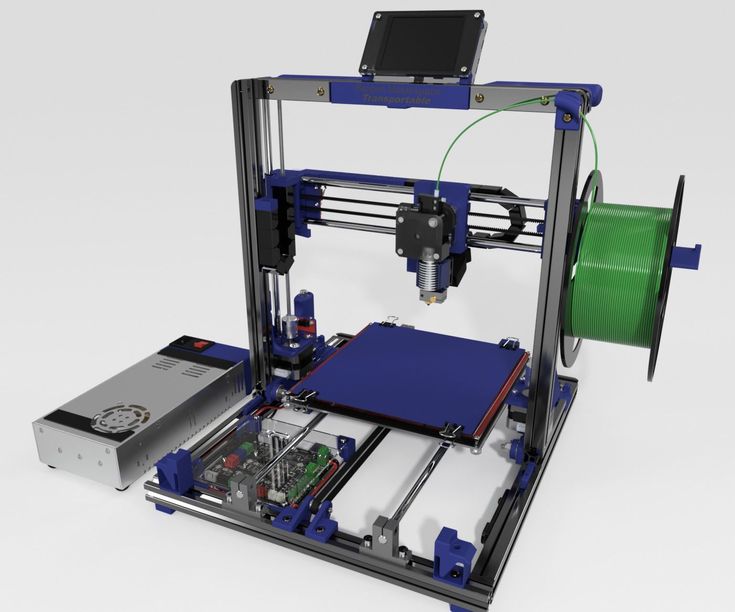
This primer has a low odor which makes it favorable to use on 3D models before painting. It is also dries in 30 minutes. You can also spray it in humid environments and it should still work great.
One user said that she sprayed this primer to on his prints before sanding and finishing and it worked fantastically.
You can find a can of Rust-Oleum 2-In-One Filler & Primer Spray from Amazon.
Paint & Paintbrushes
Painting finished models improves their aesthetic value and enables you to add a personal touch to them. You want to use the right type of paint that works well for 3D printer objects and miniatures.
I’d recommend going with the Caliart Acrylic Paint Set with 24 Vivid Colors from Amazon.
Acyrlic paints and paint brushes are the perfect tools for coloring your printed models. They are bright and can be used on a variety of surfaces e.g. ABS, PLA, PETG and wood.
In terms of paint brushes, I’d recommend going with the Soucolor Acrylic Paint Brushes Set 20 Pcs from Amazon.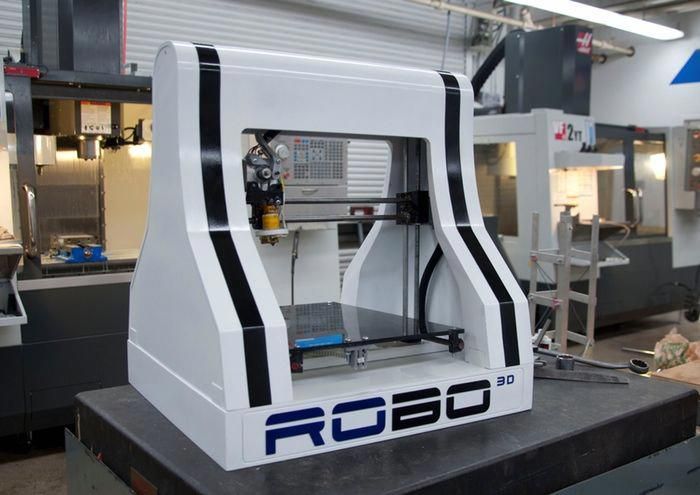 They come with many fine brushes that can paint some great detail on miniature 3D prints and other 3D printed objects.
They come with many fine brushes that can paint some great detail on miniature 3D prints and other 3D printed objects.
Store paints from the hardware can be too thick and even end up clumping and forming unpleasant layers. Acrylic paints are used since they cover a greater surface and are easy to use.
These aren’t necessary for 3D printing, but it will definitely give you a better overall experience with the kind of quality you can get from your models.
3D Print Cleaning Kit
Having a 3D print tool kit/cleaning kit is a great set of parts that you’ll want when you start 3D printing.
A great set is the Rustark 42-Piece 3D Print Tool Kit from Amazon.
It has several parts for 3D printing, including:
- 14-Piece Knife Set
- Scraper
- Flat File
- Pliers
- Flush Cutters
- Electronic Digital Calipers
- Cutting Mat
- Deburring Tool
- 6-Piece Deburring Blades
- 3-Piece Cleaning Brushes Set
- Glue Stick
- 10-Piece Cleaning Needles
- Zipper Bag
This set of tools helps anyone involved with 3D printing with cleaning up 3D prints to make them look closer to that professional quality.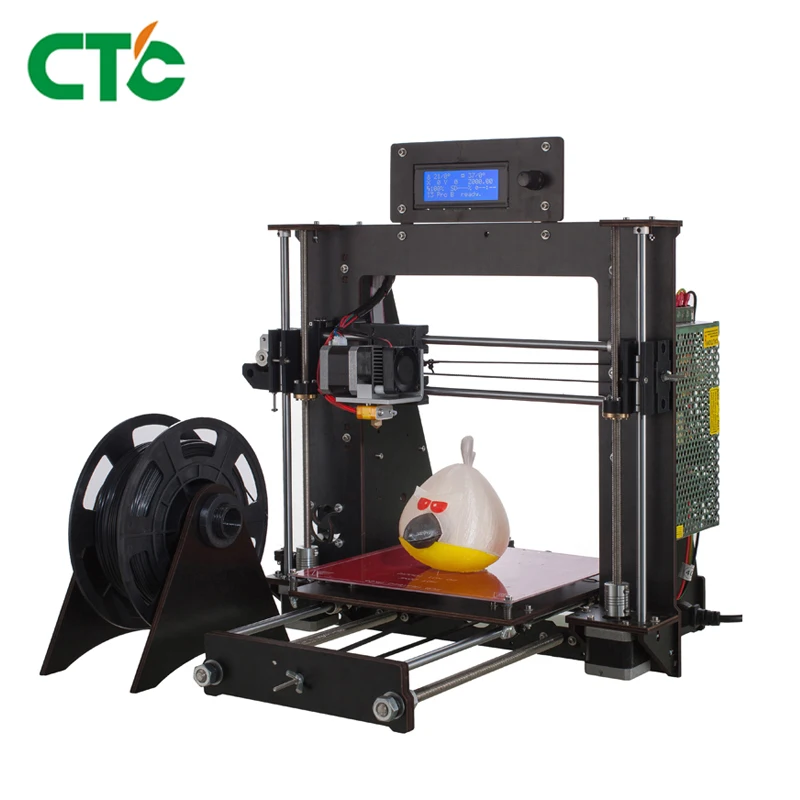 It helps with maintaining the 3D printer also with the cleaning brushes that can be used to clean up the nozzle.
It helps with maintaining the 3D printer also with the cleaning brushes that can be used to clean up the nozzle.
You also have the cleaning needles to help with clearing out the nozzle, as well as the pliers and flush cutters to get rid of excess support material.
One user said that she had been using it for her 3D printer for close to a month now and so far, they were holding up well.
Oils & Lubricants – PTFE 3-In-One
The 3-In-One Multipurpose PTFE lubricant is designed for usage in high temperature environments to reduce friction and protect parts from wear and tear.
This lubricant can work well in temperatures ranging from -50°F to 500°F. It can be used on the Z-axis threaded rod, X-Y guide-rails, lead screws, and bearings to help parts that are in contact to move smoothly.
One user purchased it to lubricate the rails and rods on his printer and it coated better than many oils he found on the market. The only minor issue that he had with it was that the twist close cap would sometimes leak from under the cap while he was applying it.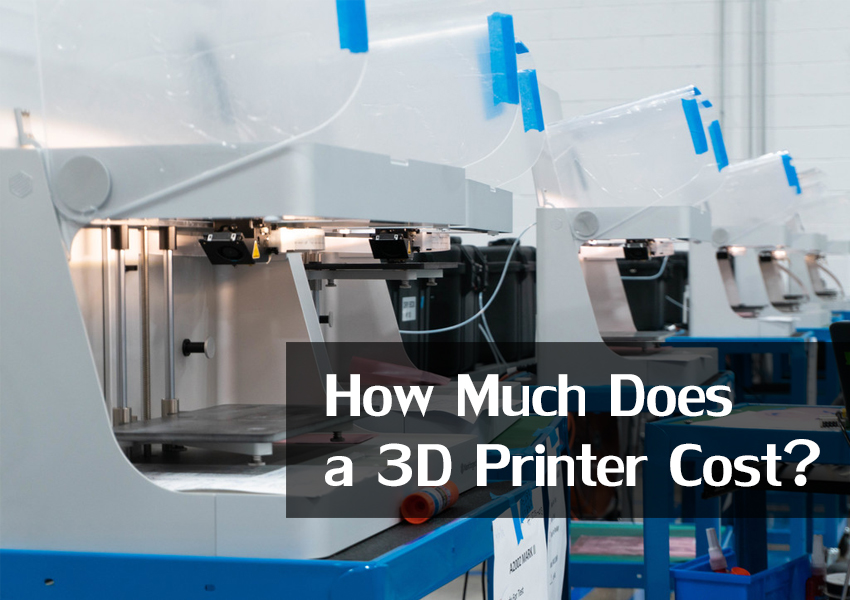
You can find the 3-In-One Multipurpose PTFE Lubricant on Amazon today.
Cleaning Wipes & Rubbing Alcohol
When it comes to cleaning printer beds and removing dust from 3D printing machines, you want to make sure you do this on a regular basis with the right products.
You can get some pretty bad bed adhesion when you have grease and marks from handling your print bed, so you want to avoid this for more successful prints.
Most 3D printer users have either a bottle of isopropyl alcohol with paper towels, or simply some sterile alcohol wipes. I’d recommend going with Dynarex Alcohol Prep Pads (200 Count) from Amazon for your cleaning needs.
One customer said that the Dynarex alcohol pads were very helpful in dissolving residue on his glass print bed and restoring its surface.
You can also get yourself a bottle of Solimo 99% Isopropyl Alcohol from Amazon. It’s another great cleaning solution for your print bed, and can be used with paper towels or a washcloth.
Replacement Parts
A lot of FDM printer’s parts will need to be replaced after being used for some time. The nozzles last for long when printing with PLA and ABS.
- Brass nozzles
- Hardened steel nozzles
- Stiff bed springs
- PTFE tubing
- Timing belt
Brass & Hardened Nozzles
In terms of brass nozzles, they can be used for a fairly long time when you print simple materials like PLA and ABS, but they’ll need replacement at some point. You can go with the Creality 10 Pcs Brass Nozzles Set from Amazon.
It includes 8 brass nozzles ranging from 0.2mm up to 0.6mm, along with 2 0.4mm hardened steel nozzles.
Compression Springs
A great upgrade that many 3D printer users implement with their machine are those yellow compression springs that go underneath your bed for leveling. The stock springs are usually quite weak and require regular leveling.
When you get something like the 8mm Yellow Compression Springs (20 Pcs) from Amazon, you won’t need to level your 3D printer very often.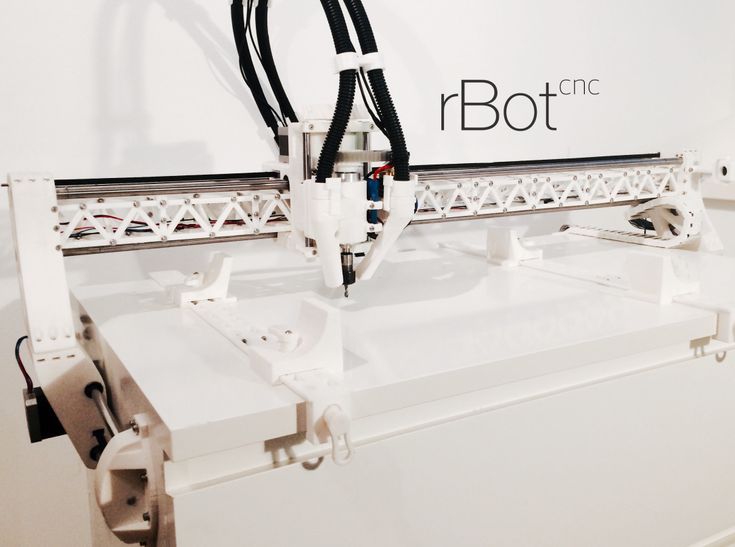 Some people have leveled it properly once and have not had to level it for months.
Some people have leveled it properly once and have not had to level it for months.
This upgrade is likely to save you plenty of time and frustration by giving you consistent and successful 3D prints.
PTFE Tubing
The stock PTFE tube can work fairly well on 3D printers, but after a while they can start to deteriorate. You’ll be better off upgrading it to Creality Capricorn Bowden PTFE Tubing from Amazon.
It has a much higher heat resistance and less friction to give you better successes with your 3D prints.
Timing Belt
The belts on your FDM 3D printer are one of the main moving parts, making them susceptible to wear and tear over time. These can last a good while of printing but after some time, you may need to replace these.
I’d recommend going with the Befenybay 2GT Timing Belts from Amazon when you do need to replace it.
It has a nice copper buckle that has been pre-pressed in order to lock in the belt on your 3D printer.
Although you may think there are many costs with 3D printing and maintenance, when you regularly maintain your 3D printer, it can actually decrease your overall costs because you won’t have to replace parts so often.
Beginners are more likely to have failures due to incorrect bed leveling, incorrect slicer settings, tangled filament or not adding support material. This can significantly drive up the cost of producing prints.
This cost will decrease as you gain more experience from 3D printing regularly.
How Much Does 3D Printing Cost Per Hour to Run?
With a standard flow rate of filament from a 0.4mm nozzle, a 0.2mm layer height, along with standard electricity and maintenance costs, 3D printing costs around $0.40 per hour. Filament costs around $0.24 per hour, electricity costs around $0.09 per hour, and maintenance costs around $0.07 per hour.
The main costs when it comes to 3D printing is the filament which goes for around $25 per KG of plastic. After doing some calculations with some standard settings, you can figure out how much filament is extruded on an hourly basis.
After doing some calculations with some standard settings, you can figure out how much filament is extruded on an hourly basis.
With the Spider-Man model below, 182g of filament gets extruded in 18 hours and 51 minutes. To calculate this on an hour basis, we take 182g / 18.85 (18 hours and 51 minutes) = 9.655g of filament extruded every hour for this specific print.
To figure out how much this is, we can take $25 per KG of plastic which is 1000g, then divide it by 1,000 to get the price per gram – $25 / 1,000 = $0.025 per gram.
Now we do 9.655 grams * $0.025 = $0.2413 or $0.24 rounded down.
Next up we got the electricity costs.
I already did an article called “How Much Electric Power Does a 3D Printer Use?” where I figured out that a standard 3D printer uses around $0.09 in electricity every hour by seeing readings of electricity use for an hour and getting an average cost in the US of electricity for a kWh.
Last but not least we have the maintenance costs.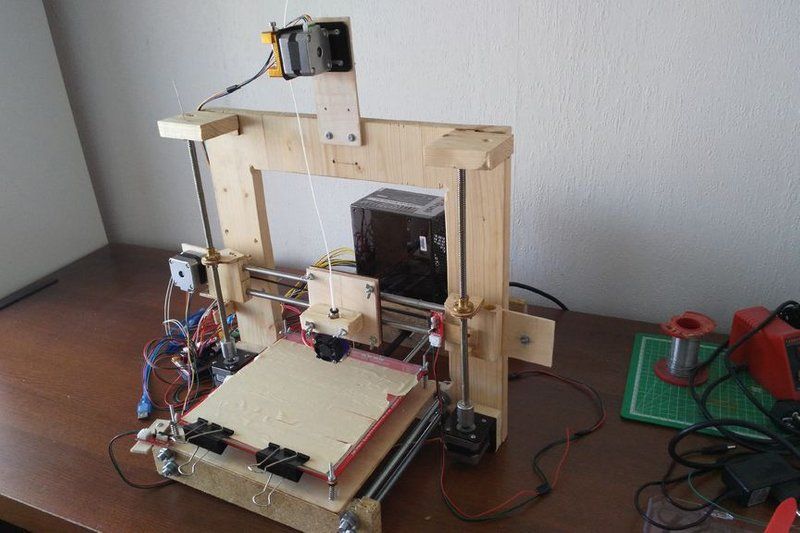 This can vary from printer to printer, but generally speaking, 3D printers don’t need a lot of maintenance if you have the right parts. You may have to replace thermistors, cooling fans, belts etc.
This can vary from printer to printer, but generally speaking, 3D printers don’t need a lot of maintenance if you have the right parts. You may have to replace thermistors, cooling fans, belts etc.
Once you install some durable parts and have a process, you may have to spend $30-$50 per year on items. If we take an average 3D printer user and say they use their 3D print for an average of 2 hours every day, that would be 730 hours of printing every year.
Let’s take the upper estimate of $50 per year on maintenance, then divide that by 730 hours, and we get an hour maintenance cost of $0.07.
How Much Does it Cost to 3D Print Objects?
By going to Thingiverse.com, you can download a model you like and print it. Using an average cost of $25 per KG below are the approximate prices of some common objects that people 3D print.
How Much Does it Cost to 3D Print A Miniature?
A standard tabletop miniature costs around $0.12 like the Elf Ranger (28mm scale) and uses only 5g of filament.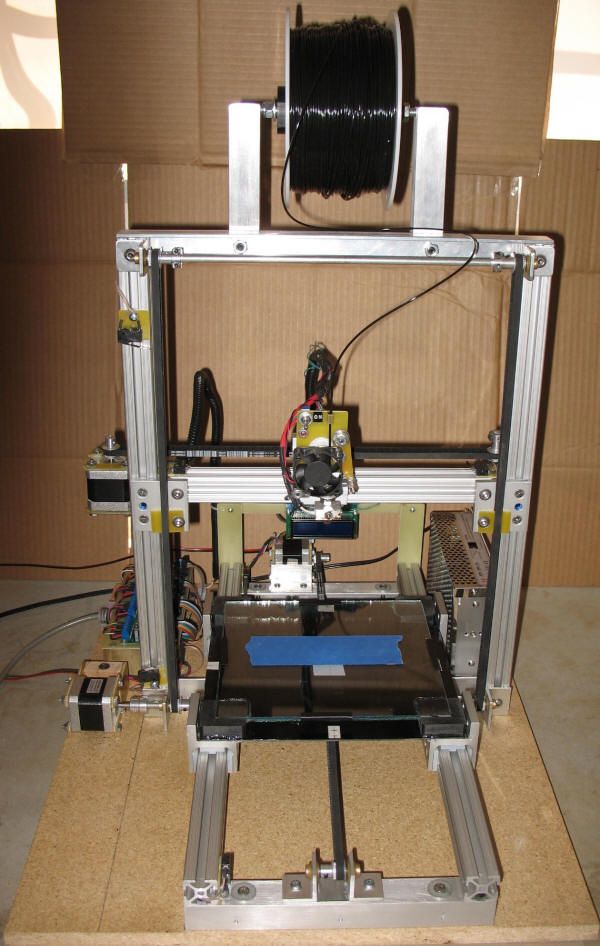 Some miniatures may use more or less filament so you adjust the cost based on the amount of filament you use.
Some miniatures may use more or less filament so you adjust the cost based on the amount of filament you use.
How Much Does it Cost to 3D Print A Phone Case?
A 3D printed phone case for an iPhone 6 Case (Halo Themed) costs around $0.58 and uses roughly 23g of filament. It measures at 70 x 9 x 140mm and is based on using PLA plastic which costs around $25 per KG.
How Much Does it Cost to 3D Print A Helmet (Stormtrooper Helmet)?
A Stormtrooper Helmet uses around 1.5KG of filament which would cost around $37.50 for a full-sized model. It can be printed in around 45 hours with 17 individual prints, or you have the choice to print the whole model in one if you have a big enough 3D printer.
How Much Does it Cost to 3D Print A Mask?
A Loki Mask from “The Mask” movie uses around 180g of filament and would cost $4. 50 in PLA at $25/KG. Its dimensions are 165 x 87 x 220mm but can easily be scaled up or down as you desire. There are many other masks out there that can use a lot less filament which would be cheaper.
50 in PLA at $25/KG. Its dimensions are 165 x 87 x 220mm but can easily be scaled up or down as you desire. There are many other masks out there that can use a lot less filament which would be cheaper.
A Covid-19 Mask V2 from Thingiverse uses around 40g of filament which would cost around $1.00.
How Much Does it Cost to 3D Print A Car?
A company called XEV started the production of a $7,500 dollar electric car in 2019, which weighs 450KG. The Strati which was designed by Michele Anoé and made 3D printable by Local Motors is another 3D printed car which costs around $24,000, though not highway worthy as it doesn’t meet requirements.
One popular story about a 3D printed car is by Sterling Backus who 3D printed a Lamborghini at home with his son, costing just $20,000.
He used a Creality CR-10 to print different parts before joining them together.
Check out the full video below.
The Strati is another well-known 3D printed car that has got plenty of traction and was first printed in just 44 hours in 2014, but with a goal to get that down to just 10 hours per vehicle.
It hasn’t really have much news recently that I could see, so they could have moved onto other projects now, but it’s still a great project and insight into the potential for 3D printed cars.
How Much Does it Cost to 3D Print An Organ?
A bioprinter can reportedly create a 3D printed organ for as little as $10,000 which is likely to decrease in price as technology improves. Researchers are trying to 3D print many organs such as a pancreas, bioprinted skin, corneas, a heart, kidneys, and even bioprinted ovaries.
Researchers are trying to 3D print many organs such as a pancreas, bioprinted skin, corneas, a heart, kidneys, and even bioprinted ovaries.
To 3D print an Anatomical Heart in PLA, it would cost around $3.65 and use 146g in filament.
How Much Does it Cost to 3D Print A Prototype?
For a simple prototype that requires 100g of filament to print, it would only cost $2.50. For a more complex part that requires professional designers, the cost can range in the hundreds to thousands of dollars depending on the complexity of your prototype. The main cost would be in the design.
A full Nintendo Headrest Prototype measuring 94.7 x 87.6 x 121.8mm will cost you $0.98 when using PLA filament.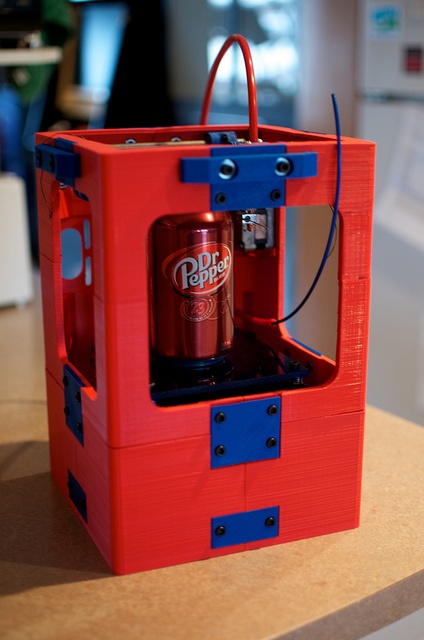 It was fully designed in Fusion 360 which made the locking mechanism a lot easier to use.
It was fully designed in Fusion 360 which made the locking mechanism a lot easier to use.
A prototype can be a small object which would only require 15 grams of material or a large object that consumes several KGs of material.
A prototype can cost anywhere from $30 to upwards of $30,000 without including the post-processing costs. Well, all this depends on how big the design is and its complexity.
How Much Does it Cost to 3D Print A Shoe?
A 3D printed shoe called the Pigalle Pump Shoe uses around 114g of filament and would cost $2.85 to create. Another popular footwear that is 3D printed is the Recreus Sandals which you would want to print out of TPU. It similarly uses around 115g of filament and would cost around $2.90 .
How Much Does it Cost to 3D Print A Mug?
This 3D printed Fish Mug uses 156g of material and would cost $3.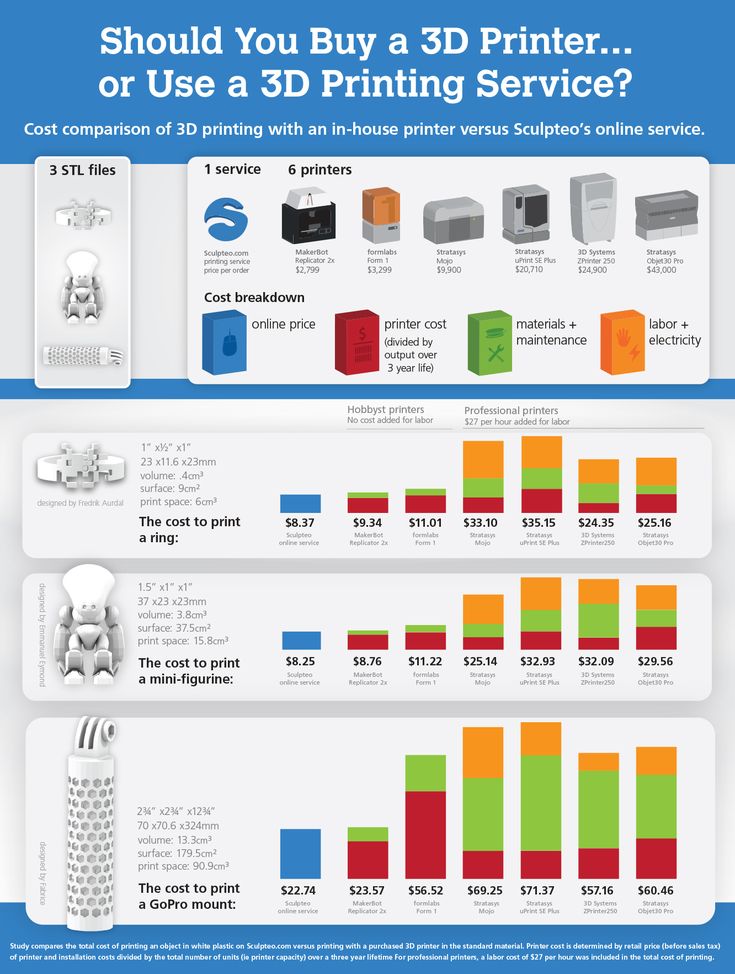 90 in PLA filament. You would want to coat this in a food safe epoxy to be able to be used safely.
90 in PLA filament. You would want to coat this in a food safe epoxy to be able to be used safely.
How Much Does it Cost to 3D Print An Iron Man Suit?
A Full MK6 Iron Man Suit would require about 20kg of filament when using the CR-10. It would also cost about $360 when using PLA and a 15% infill rate. This is much cheaper compared to a professional Mark 43 Basic Armor Package which can cost upwards of $1,300.
How Much Does it Cost to 3D Print An FPV Drone?
The Nanolongrange V2 GPS FPV Drone is a modern and very light drone which only uses 7.5g in filament for the frame, which is $0.18. It requires other parts like a flight controller, a motor, 4 blade propellers, a GPS antenna module, an FPV camera, M2 screws and rubber bands, all costing around $110.
The cost of these parts were gathered from going on Banggood (product site) on the Thingiverse page, and adding up the relevant costs. This is a very minimal drone, only having a flight time of 20 minutes and 4.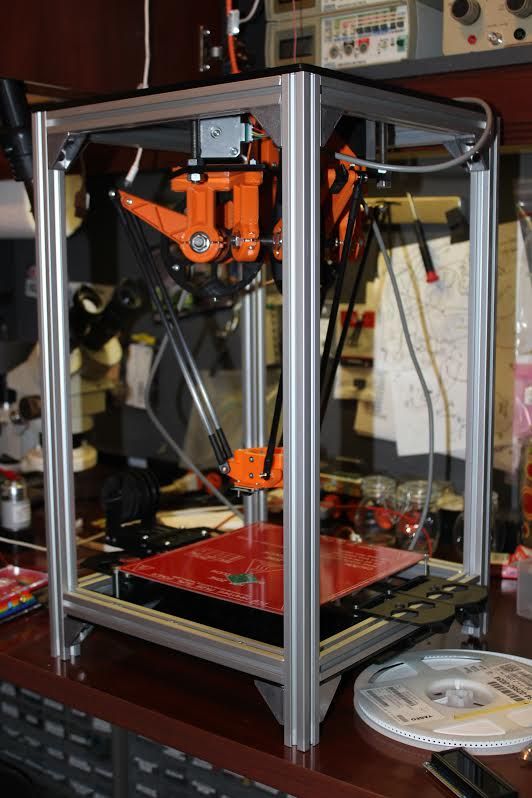 65km distance.
65km distance.
For a more capable drone, you’re probably looking at a much higher price, but that is due to parts rather than the 3D printing aspect of things.
How Much Does it Cost to 3D Print A Real House?
A 3D printed house can cost as low as $4,000 and only take around 24 hours to complete. SQ4D are at the forefront of the 3D printed home industry, being able to create a 1,900 SQ FT. home in just 48 hours and used less than $6,000 in materials. Costs are decreasing as times move forward.
Homes are being built for low-income families in Mexico, as well as throughout the US.
Large industrial grade printers extrude cement in layers to form walls. Fittings such as windows and doors are placed after the main structure is completed.
3D printing homes is still at its infancy, so we can expect to see more 3D printed homes in the market in the near future.
How to calculate the cost of printing on a 3D printer
Home / Blog / Useful / The cost of 3D printing. Examples of models with prices
06/21/2021
Content
-
- Available Technologies and the main differences
- FDM 3D
- Photopolymer printing
- Industrial printers
- Availability 3D-print
- 999 Printing examples
- Available Technologies and the main differences
- Custom 3D printing
- The cost of commercial 3D printing
- What is not profitable to print
- Examples of commercial printing
- Totals
For some ideas, 3D printing is the fastest and easiest solution.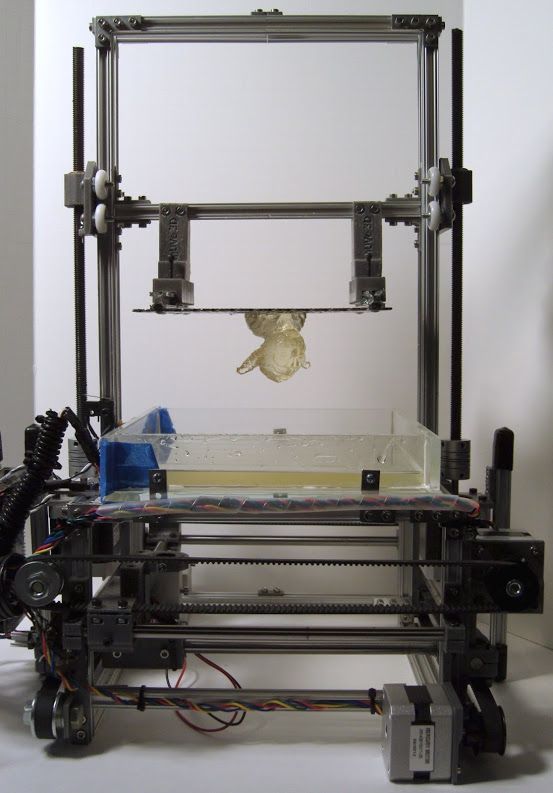 In some situations, purchasing your own 3D printer can be a good solution, but sometimes it is much more profitable and faster to order the necessary product from a company specializing in 3D printing. Yes, and many owners of a 3D printer are thinking about how to “monetize” their hobby, but how to correctly calculate their costs?
In some situations, purchasing your own 3D printer can be a good solution, but sometimes it is much more profitable and faster to order the necessary product from a company specializing in 3D printing. Yes, and many owners of a 3D printer are thinking about how to “monetize” their hobby, but how to correctly calculate their costs?
Despite the fact that it is customary to indicate the price per gram of working material, simply multiplying the weight of the model by the cost of 1 gram will be wrong. In addition to the cost of consumables, many more, at first glance, non-obvious costs are added to the price of the product.
Each 3D printing technology uses its own consumables. Let's analyze the most popular and affordable of them.
Available technologies and key differences
Currently, a huge number of 3D devices have appeared, from small desktop ones that fit on the desktop to huge industrial machines. Among the most affordable, 2 technologies can be distinguished - FDM and photopolymer printers (LCD / DLP / SLA).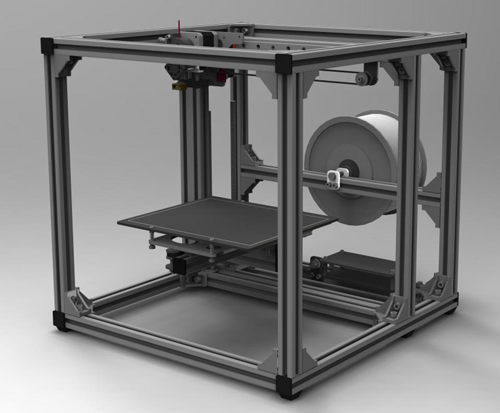
FDM 3D printing
Today, the most affordable 3D printing technology is FDM. A variety of materials and 3D printers allow FDM to be applied to a wide range of applications.
Schematic operation of FDM printer
A large selection makes it easy to choose a 3D printer for a specific task or find a universal device.
The material for printing is a plastic thread - filament. On the market you can find filament for various tasks, for every “taste” and budget. These can be very inexpensive ABS and PLA plastics or specific ones - conductive, burnable, etc.
Pros:
Cons:
Despite the fact that FDM allows you to print a wide range of plastics with different properties, the technology has some limitations. For example, it is impossible to obtain a perfectly smooth surface, to produce miniature and very thin elements, or to produce parts with very complex internal geometry with high accuracy.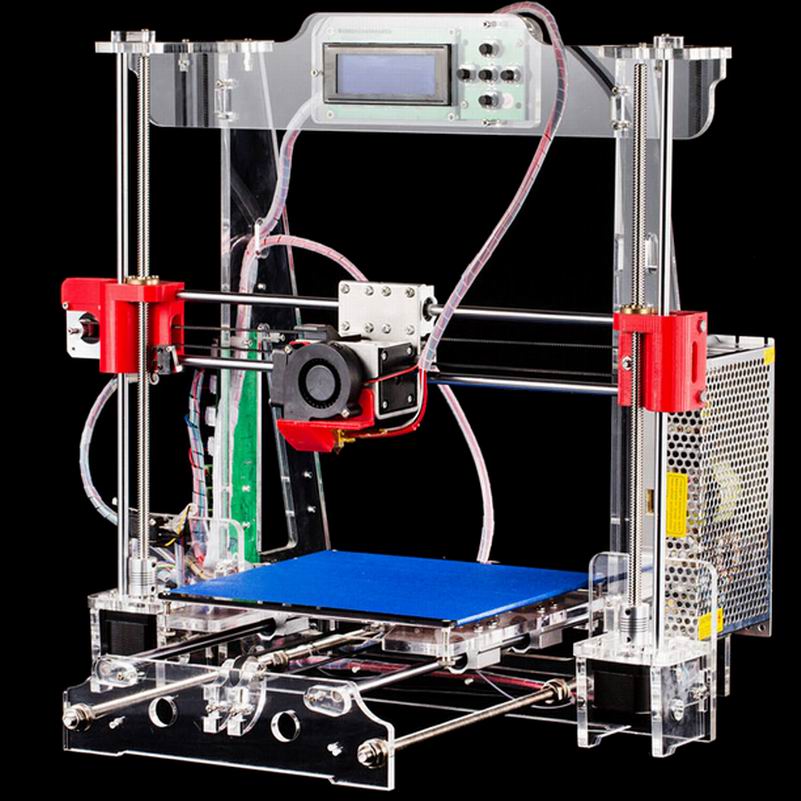
Photopolymer printing
Photopolymer printers can work on one of 3 technologies - SLA, DLP or LCD. These devices will come to the rescue if you need to make a small but very detailed model with many small details.
How photopolymer printers work
As a consumable material, a photopolymer resin hardened by UV radiation is used. Now there is a wide variety of photopolymer resins for every taste. From particularly strong and precise engineering or jewelry resins to soft flexes.
Pros:
-
High print precision
-
Good surface quality
-
A wide variety of printers and consumables
Minuses:
Photopolymer printers have shown themselves well in a variety of industries that require a perfectly smooth surface and high accuracy. They are used in dentistry, the jewelry industry, for making miniature master models for casting, and much more.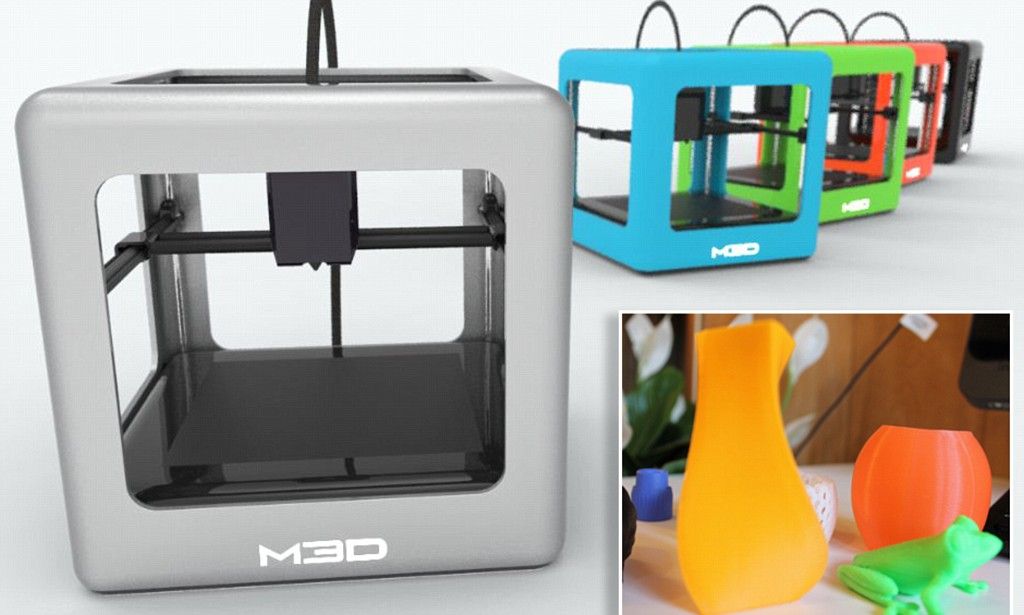
Industrial printers
These are already industrial machines, which require a separate room and sometimes certain requirements for ventilation, etc. In this article, we will not analyze these devices in detail, but briefly consider the most popular technologies.
FDM
In addition to desktop devices using FDM technology, industrial printers that work on the same principle are common.
This category includes devices with a large print area (from 30x30x30 cm and more). For example, Raise Pro2 with a print area of 30x30x30 cm.
Raise Pro2
Or machines designed for printing with refractory materials (eg PEEK). Such 3D printers usually have an active thermal chamber, and the extruder can be heated above 400 degrees.
CreatBot F160-PEEK for use with refractory plastics
Photopolymer printers
Industrial photopolymer devices usually have a much larger working area, compared to their "home" brothers.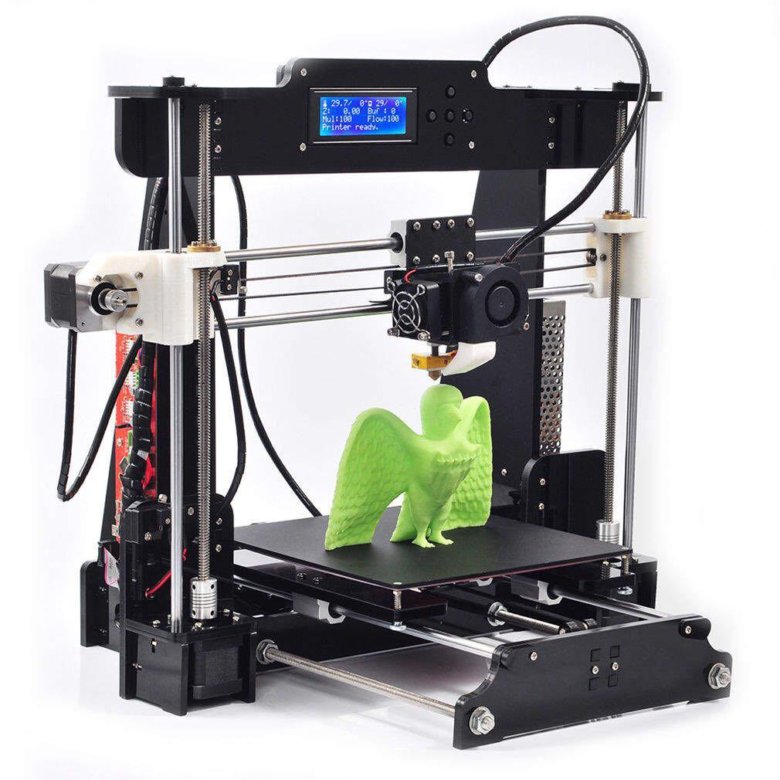 In addition, many processes have been optimized and automated for faster operation. On such printers, you can quickly and accurately produce a small batch of models, a large prototype or a master model.
In addition, many processes have been optimized and automated for faster operation. On such printers, you can quickly and accurately produce a small batch of models, a large prototype or a master model.
Prismlab Large Area Industrial Resin Printer Family
Free Shipping
Add to compare
Product added to compare Go
| Manufacturer | CreatBot |
Free Shipping
Add to compare
Product added to compare Go
| Manufacturer | Raise3D |
Free Shipping
Add to compare
Product added to compare Go
| Manufacturer | Prismlab |
Free Shipping
Add to compare
Product added to compare Go
| Manufacturer | Prismlab |
3DP
3DP - Three-Dimensional Printing (translated as three-dimensional printing) is a logical continuation of conventional two-dimensional printers. Printing is done using nozzles that selectively apply a binder to the material (usually gypsum). A dye can be added to the binder and the model will be colored.
Printing is done using nozzles that selectively apply a binder to the material (usually gypsum). A dye can be added to the binder and the model will be colored.
Colored plaster model
Since the plaster model is fragile, a similar principle is used for printing with metals. Only the finished product needs to be treated in an oven to remove the binder and improve strength. But despite the processing, such metal prints will still be inferior in strength to cast products.
MJM
This is a proprietary technology of 3D Systems. MJM is a mix of FDM, 3DP and sometimes SLA (depending on material chosen). Printing is done using a variety of small nozzles (from 96 to 488) located on the head of the machine. The accuracy and quality of the surface of models made in this way is in no way inferior to photopolymer printers.
Models made with MJM technology
Such devices can work with photopolymer resins, wax or thermoplastics.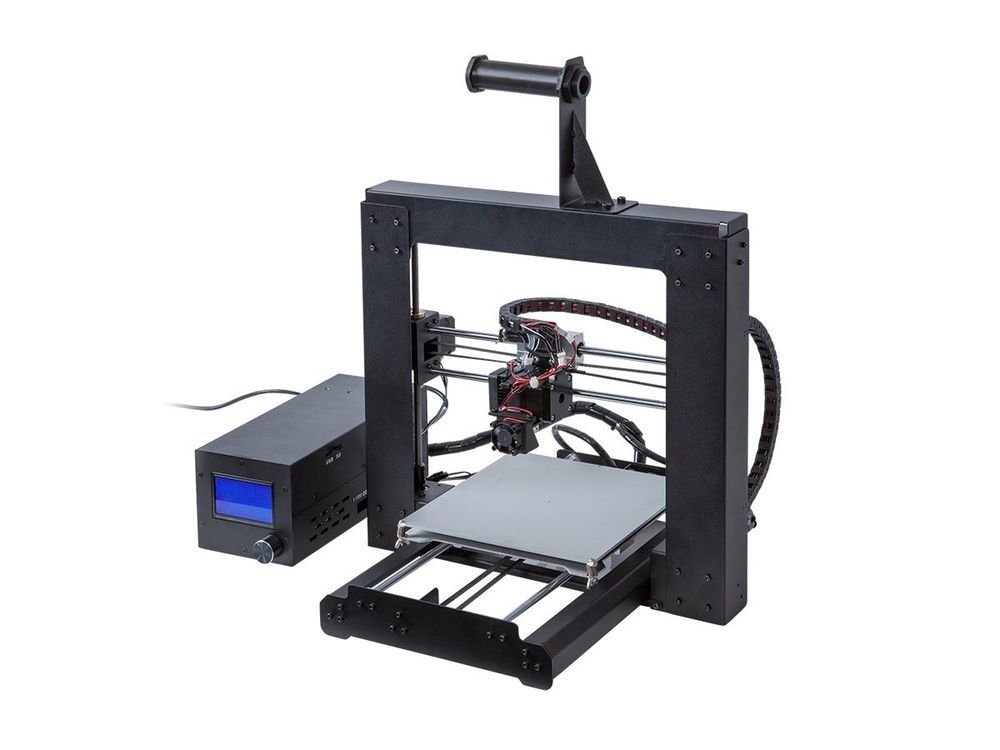 You can combine several materials at once - for example, for complex models, you can use wax as a support.
You can combine several materials at once - for example, for complex models, you can use wax as a support.
SLM
SLM is the layer-by-layer sintering of metal powder using a powerful laser. There are several similar technologies - SHS/SLS. The principle of operation is the same, only a thermal print head is used instead of a laser beam.
SLM Turbine
As a material for printing, you can use powders of various metals - gold, stainless steel, aluminum, various alloys, etc.
During printing, the working chamber is filled with an inert gas to prevent oxidation of metals. This allows printing even with titanium powder.
Models made by this method are in no way inferior, and sometimes even superior, to cast products. SLM allows you to produce models with complex internal geometry that cannot be produced by another method (casting or milling).
Cost of 3D printing
The cost of a model usually consists of several factors.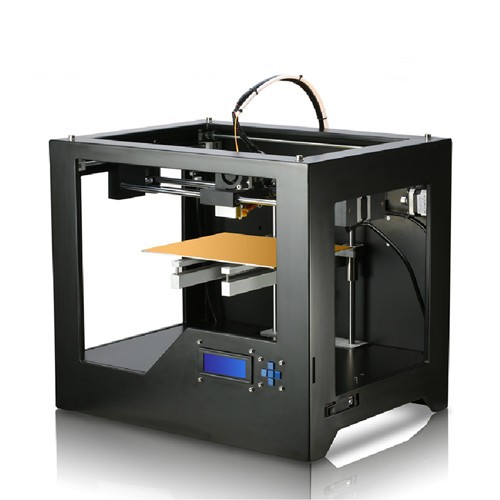
-
Equipment depreciation. The printer, like any machine, requires maintenance and periodic replacement of some parts. During operation, belts gradually stretch, bushings or linear bearings wear out. For example, when bushings or linear bearings are worn; shafts may wear out and need to be replaced.
Cost of materials
The main cost item for a 3D printer is, of course, the printed material.;
FDM (plastic filament)
Since FDM technology is by far the most common, the choice of filaments is very diverse.
-
Engineering plastics are usually nylon with various fillers added to improve the physical characteristics of the finished model. Special cost. plastics starts from 2000r per coil and above. It all depends on the manufacturer and filler (carbon fiber, fiberglass, etc.).
-
Decorative plastics are used to imitate various materials. Plastic can simply be unusually colored (luminous, transparent plastics) or a special filler is added to it (plastics with metal powder).
 The cost of decorative plastics starts from 1500 rubles per coil and more, depending on the filler.
The cost of decorative plastics starts from 1500 rubles per coil and more, depending on the filler.
A big advantage of FDM is the diverse choice of materials to work with. This allows, having one printer, to produce almost any product - from a child's toy to a complex engineering prototype.
Photopolymers (resin)
Photopolymer resin printing technology is becoming more and more accessible. There are many different resins.
-
The cost of ordinary colored resin starts from 2500 rubles per 0.5 kg (volume +/- 0.5 l). You can find a smaller volume of resin (250 gr) on sale. You can buy several different resins in small containers and find out in practice which one is best for a particular model.
-
Engineering resins are resins with increased strength. They can be used not only for printing decorative items, but also for making functional prototypes and models. The cost for 0.5 kg starts from 5900r and above.

-
Special resins - burnable, dental, soft flexes, etc. Depending on the resin, the price for 0.5 kg can start from 4800 rubles and more. It all depends on the characteristics of the resin.
Photopolymer resins have not yet reached such a variety as FDM filaments, but they are surely catching up. Although due to the fact that a liter of resin costs significantly more than a spool of filament, the cost of the product is much higher.
Print examples
FDM
Mag Pull for G3 magazines.
The model was downloaded for free from an open source (the file can be downloaded here). Printing with engineering carbon-filled plastic (price per spool from 4700 rubles). The weight of the model with support is about 25 grams. Post-processing was not needed. The cost of the finished model is 250 rubles.
Plastic fastener
The file was downloaded from an open source (can be downloaded here).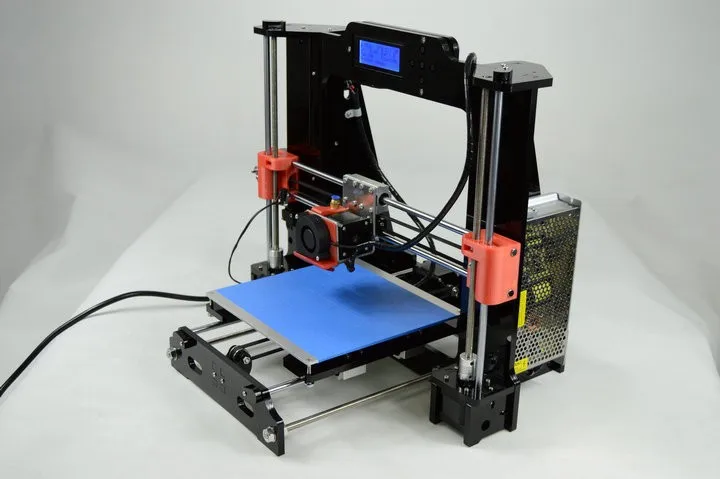 Plastic - carbon-filled nylon (price per coil from 4700r). The weight of the finished product is about 20 grams. Print without post-processing. The total cost is 200 rubles.
Plastic - carbon-filled nylon (price per coil from 4700r). The weight of the finished product is about 20 grams. Print without post-processing. The total cost is 200 rubles.
Model watch
The model is modeled to order (the cost of modeling is from 1000 rubles). The product is printed on an industrial printer using soluble support. Print without post-processing. The cost of the finished product - from 700 rubles per piece (depends on the number of required products).
Traction prosthesis
The model is taken from an open source (you can download the modified version of the prosthesis here). The weight of the used material is about 600 gr, printing with ABS plastic (the cost of the coil is from 800 r). After printing, post-processing and assembly took place. The total cost of the product - from 3000 r (depends on the print material, support material, filling, etc.).
Pedal layout
Production of a 3D model according to the drawing (from 1000 r). The weight of the finished model is about 200 gr. The product was printed with engineering carbon-filled plastic (the cost of the coil is from 4700 r). Post-processing was not needed. The cost of the finished product is about 3000 rubles.
The weight of the finished model is about 200 gr. The product was printed with engineering carbon-filled plastic (the cost of the coil is from 4700 r). Post-processing was not needed. The cost of the finished product is about 3000 rubles.
Photopolymer printers
Model jaws for crowns
Files for printing were obtained using a 3D scanner and finalized in a 3D editor (the cost of scanning is from 3000 r, the cost of manual revision is from 1000 r). Printing on an industrial photopolymer printer. Post-processing is not needed. The cost of the finished product is from 80 r per gram.
Burnout resin rings
The model is made to order. Printing on a desktop SLA printer with a burnable polymer. Post-processing is not needed. The cost of the finished product is 200 rubles per product.
Miniatures
The models were bought on the myminifactory website (the cost of the model is from $2).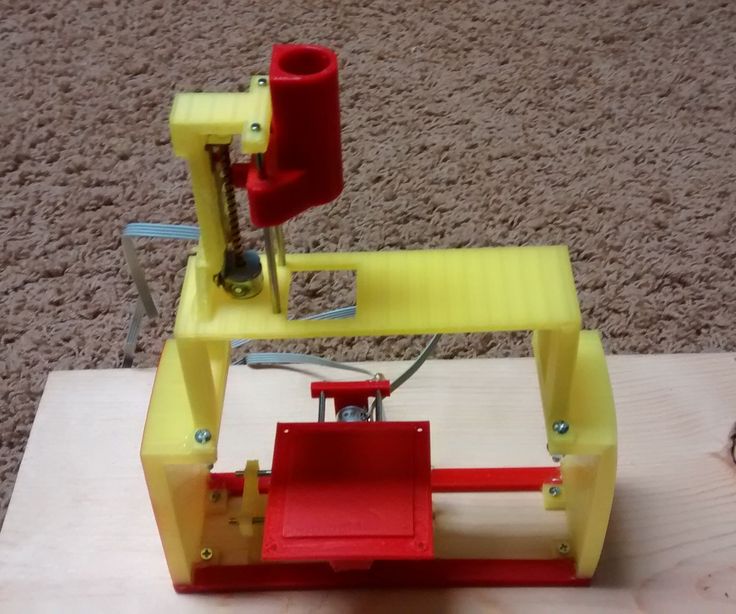 Made with a desktop DLP printer. Post-processing was not required. The cost of the finished figurine is from 70 r per gram.
Made with a desktop DLP printer. Post-processing was not required. The cost of the finished figurine is from 70 r per gram.
Custom 3D printing
Many owners of 3D printers are thinking about monetizing their hobby. But you should understand that the price of 3D printing “for yourself” and the price of commercial printing are very different.
When starting to print to order, it is better to have several printers working on different technologies.
Cost of commercial 3D printing
In addition to the cost of the model, to the commercial production of products, you can add:
-
Modeling. Often the client needs not only to make a part, but to pre-model it. It can be a simple cogwheel that doesn't take long to model, or it can be a complex sculpture that takes more time to model than it does to make.
-
Model post-processing. This can be simply the removal of supports, with cleaning of the place of their contact with the product, or a complete processing cycle (puttying, surface grinding, painting, etc.
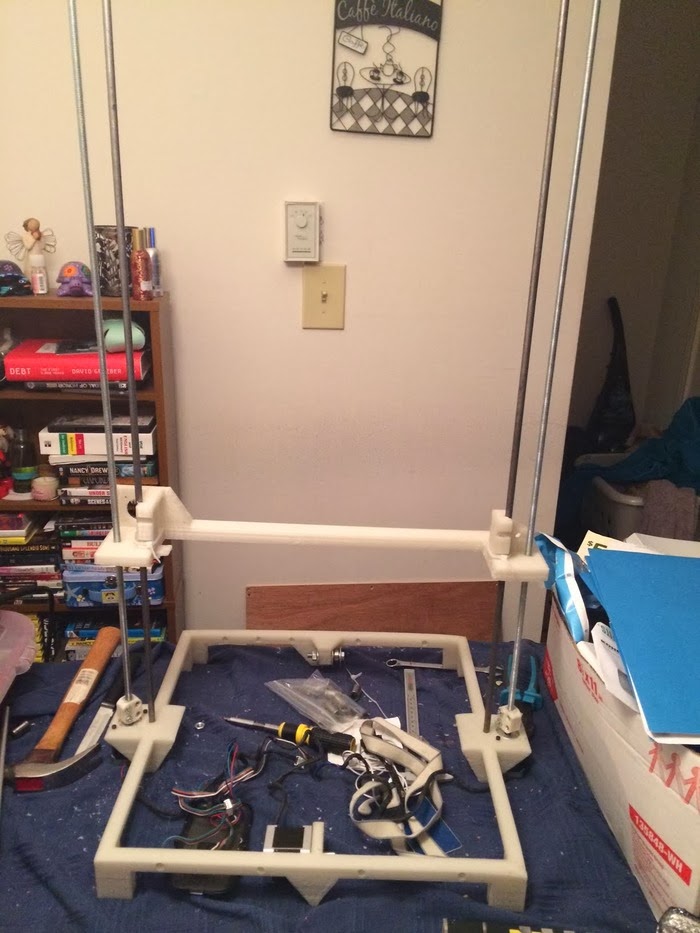 ).
).
It should be borne in mind that it is not always possible to print the model the first time. Sometimes it may take several attempts. And these are additional costs.
What is unprofitable to print
Despite the wide possibilities of 3D printing, there are models that are unprofitable to make on a 3D printer. For such models, it is better to use other manufacturing methods.
Commercial print examples
Jewelry for further casting
Manufacture of promotional items and souvenirs
Piece miniatures or master model for further casting
3D printed model
Profitable to print on a 3D printer:
-
If the item is only sold as an assembly. For example, a small gear broke in the mechanism, but the mechanism is sold only “assembly”.
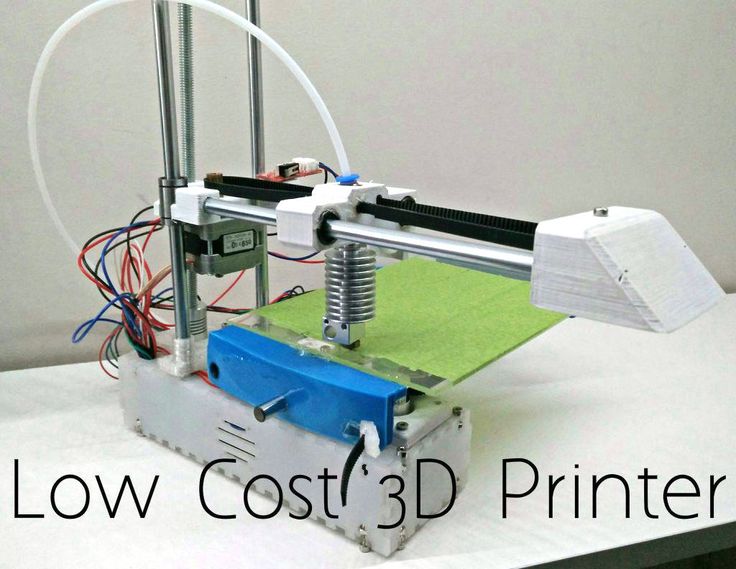 It is much cheaper to make the desired gear on a 3D printer than to buy the entire mechanism.
It is much cheaper to make the desired gear on a 3D printer than to buy the entire mechanism.
-
A small batch of parts. Small batches, especially models with complex geometry, are more profitable to produce on a 3D printer than by casting or other methods.
Totals
If you need several models or a small project, sometimes it will be more expedient to outsource manufacturing. After all, in addition to buying equipment and materials, you will have to understand the nuances of the settings and the characteristics of various materials.
Buying a 3D printer for commercial use is justified if you can fully load it with work or then it can be used for other purposes.
To print to order, you need to have several printers working on different technologies. It is better to get several devices with a smaller print area than to buy just one printer, albeit with a large working area.
#Useful
Expert in additive technologies and 3D printing with over 5 years of experience.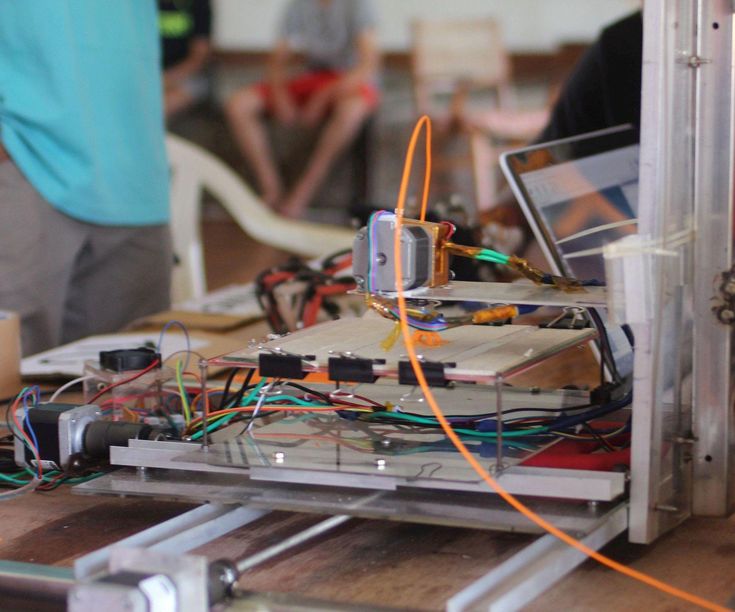
Share
all materials
Do you have any questions?
Our specialists will help you with the choice of 3D equipment or accessories, consult on any questions.
3D printing cost calculator
Although I posted the link in the discussion of the parallel topic of comrade 3D_MPL (Cost of 3D printing. Calculator for calculating from 3D-MPL), I thought it would be better to make a separate post to get feedback.
So please make constructive (!) suggestions. I will answer any questions on the topic.
.
So.
Again and again the question arises of how to calculate the payment of your labor as correctly as possible. Although some of the details seem simple, they often require a lot of brain effort, which MUST be paid. Well, the time spent too.
.
Some people think that it is enough to take into account the weight of the part - I think this method is simply fundamentally wrong, because, for example, printing a vase / box with a 1mm nozzle and a 0. 6mm layer will be faster than printing some highly detailed bracket in a car or a souvenir with a 0.2mm nozzle and a 0.05mm layer. So, with the same weight, the time can be many times (tens of times) longer! Yes, and draw a different bracket, you must be able to!
6mm layer will be faster than printing some highly detailed bracket in a car or a souvenir with a 0.2mm nozzle and a 0.05mm layer. So, with the same weight, the time can be many times (tens of times) longer! Yes, and draw a different bracket, you must be able to!
Moreover, we want our many hours of work to be adequately paid.
A typical example from my practice is a kettle handle.
The detail is shapeless, you don't know how to approach it in order to draw it. The result - 7 hours of modeling, 4 hours of printing, an hour of post-processing, 57 (total!) Grams of plastic. And now, imagine, a customer comes to you, 'Why is it so expensive??? It's only 57 grams!!!'. And you lost a whole day (work shift).
.
So, I think that the main resource that should be paid for is time!
.
And here is the table itself.
Link to Yandex Disk: https://yadi.sk/i/oy1r3v_dA-8E1w
.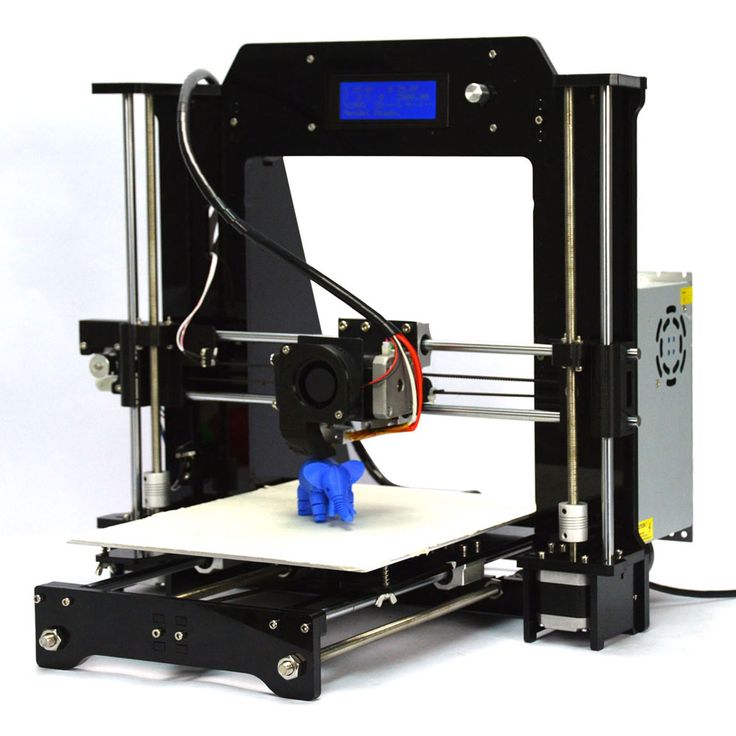
By the way, I update the table from time to time! I recently discovered an inaccuracy in the calculation of the cost of the material, corrected it. So follow the link and check it out.
.
Some characteristics:
Time is written conveniently - in hours and minutes.
Modeling and post-processing cost per hour.
The weight and cost of the coil are written separately - no need to calculate the cost of a kilogram (for lazy people).
The so-called 'difficulty factor' is missing from the table. The complexity itself will be formed from: modeling time (mostly), printing time (necessary detailing), post-processing time (picking out supports from hard-to-reach places, painting, etc.).
Substitute the values that are convenient for you. I don't insist on these. Columns 'Prices' and 'Costs'.
The white numbers in the 'Total' column are reference numbers, just for convenience.
Depreciation is calculated from the time of direct operation of the printer (more work - more wear). I take half a dollar.
I take half a dollar.
The price of the first part differs from the subsequent ones only by taking into account the simulation time.
The maximum printer power is taken - still pennies come out.
Currency - rubles. You can change to yours.
When you write the price for the reel, you must also take into account the cost of delivery! (In our outback, the delivery of one coil is 500 rubles!) I can add the 'delivery' item for convenience, if you want.
.
I advise you not to show this table to the client. Unless if he thinks that it is too expensive, it must be recalled that he would not agree to work for 100 rubles / hour (or how much you put). And you yourself know that the client wins if he buys one spare part instead of a whole expensive unit. See for yourself.
Sometimes, on the contrary, it is possible to raise the price for the same reasons)))
.
Let me add a little about the cost of the actual filament.
Even the most expensive filament does not affect the final cost so much.




